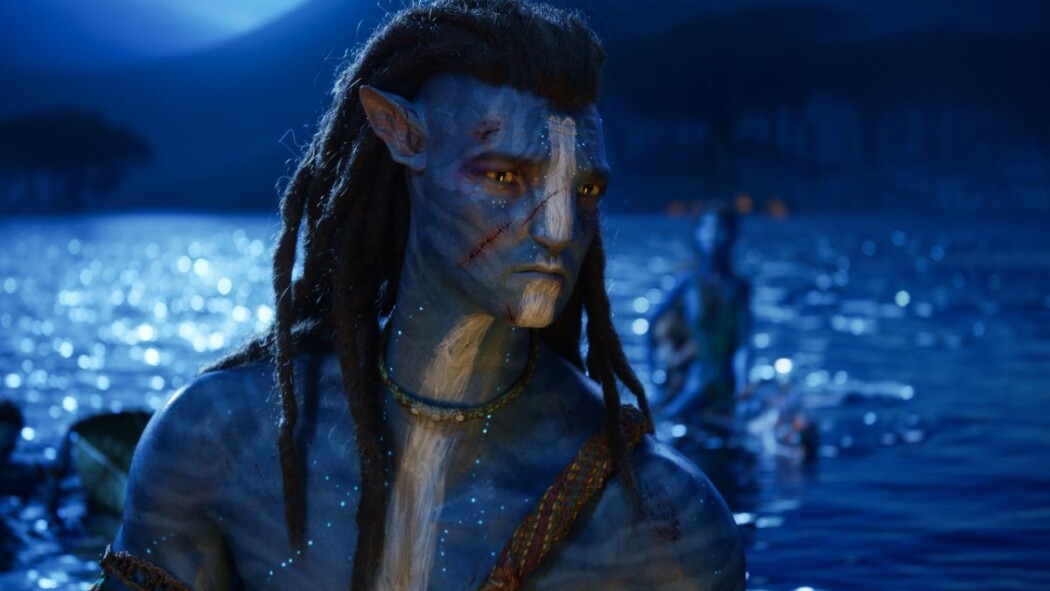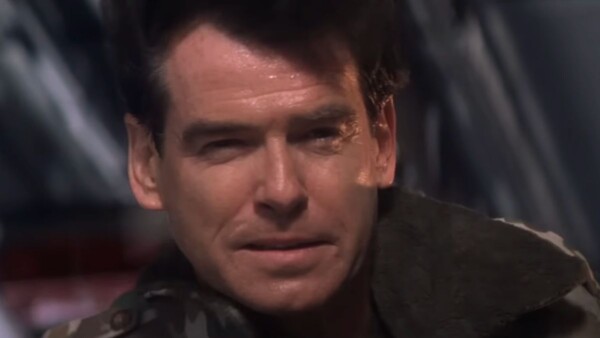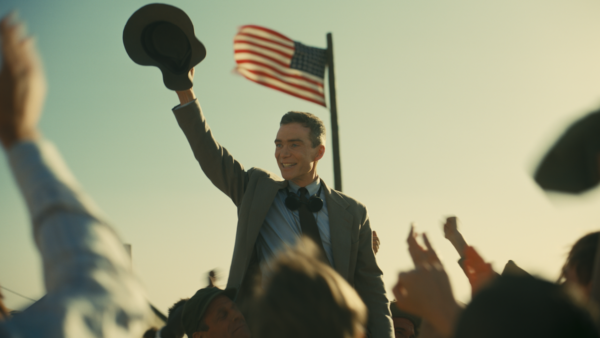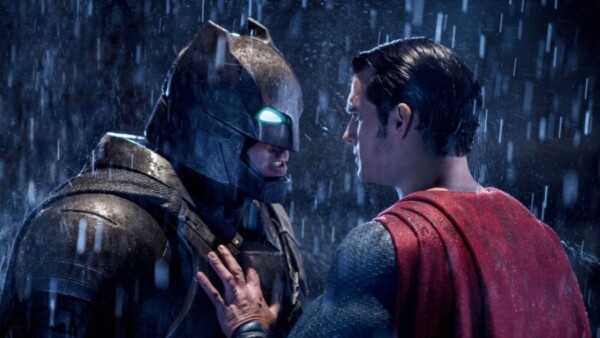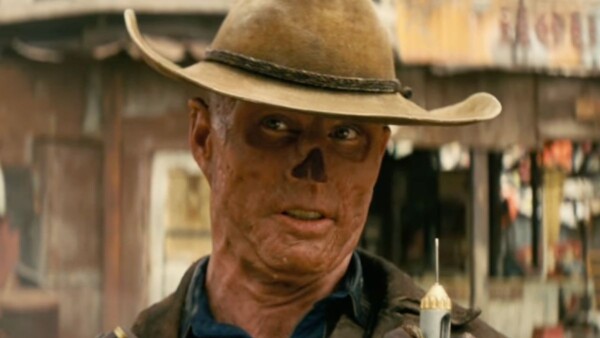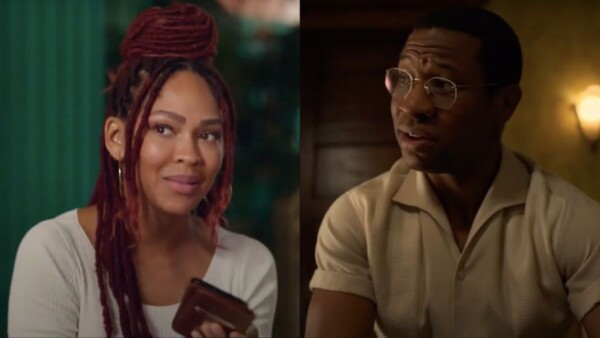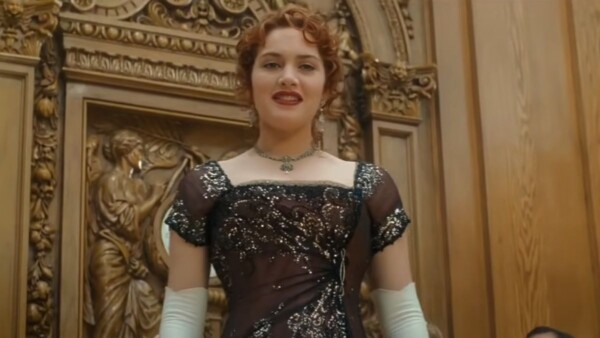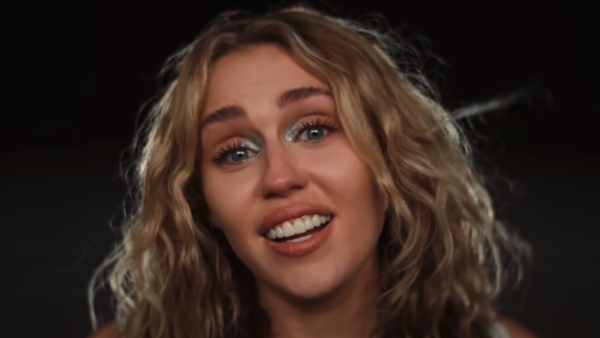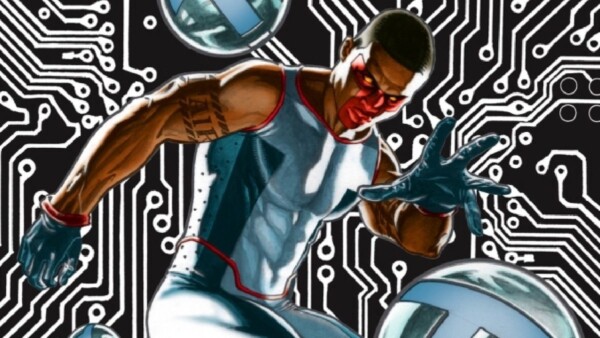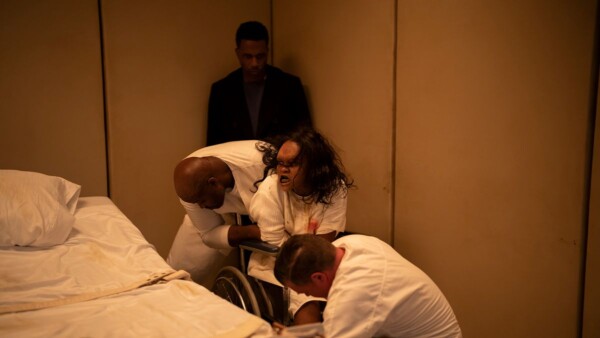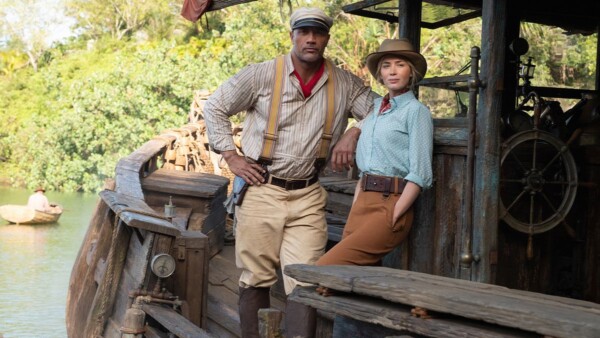Almost as long as there has been cinema there have been horror movies. While the genre is often branded with the stigma of being low-brow, cheap, and only for hardcore fans of jump scares and gore, it is also responsible for some of the greatest films of all time, and certainly many of our favorites fall somewhere along the horror spectrum.
Just as there are trashy, forgettable, throwaway horror films every year, there are also those that that play upon our greatest fears to create tension, an ominous atmosphere, and to terrify us to our very core. The history of the genre is full of monsters (both human and otherwise), horrific events, and chilling scenarios that thrill us, scare us, keep us on the proverbial edge of our seats, and stick around to haunt our nightmares long after we leave the theater.
While there are still plenty of upcoming horror movies to look forward to in the coming years, the list that follows is CinemaBlend’s definitive, updated comment on the greatest horror movies ever made, though we can’t help but wish there was room for 50 or 100 entries. Will you agree with all of our choices? Probably not, but we’re willing to bet that some of your favorites made the cut.
But first, some honorable mentions…
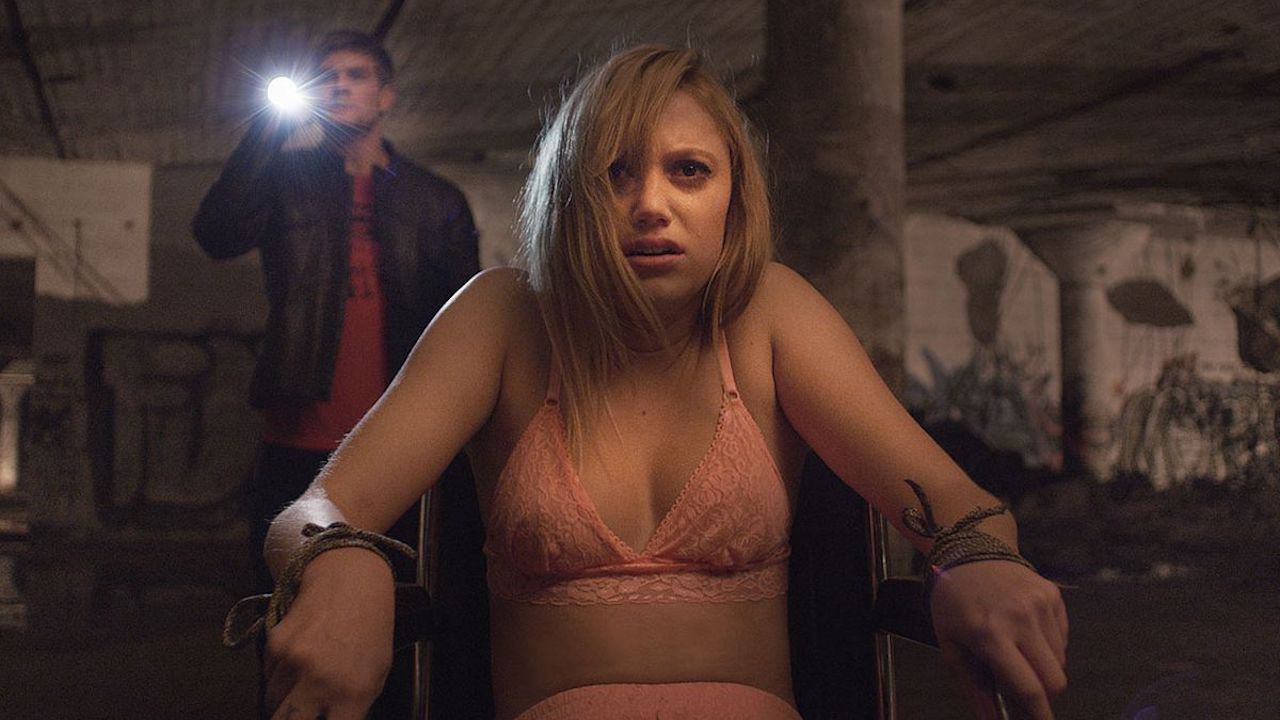
It Follows (2014)
A dreamy visual tone, adrenaline kicking score, and skin-crawling moments without reliance on jump scares make David Robert Mitchell’s It Follows — starring modern scream queen, Maika Monroe, as the heir to a sexually transmitted curse that makes her the target of an unstoppable, shapeshifting entity — one of the most fascinating and enduringly creepy films in recent memory.
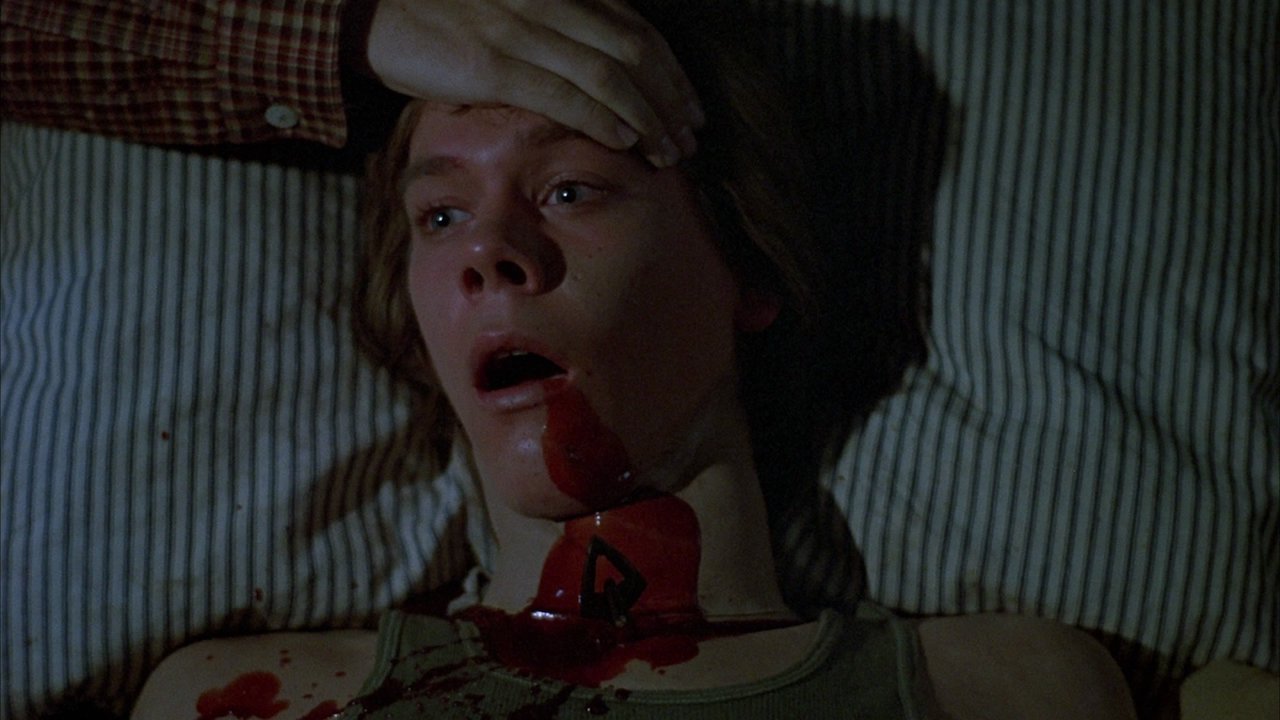
Friday The 13th (1980)
Along with the likes of Halloween and The Texas Chainsaw Massacre, Friday the 13th, Sean Cunningham’s first installment of what would become the franchise famous for Jason Voorhees, who is mostly absent in this one, however, helped define the slasher craze of the 1980s and firmly established the steps for the many by-the-numbers genre movies that followed. It also remains the strongest of the Friday of the 13th films over the years.
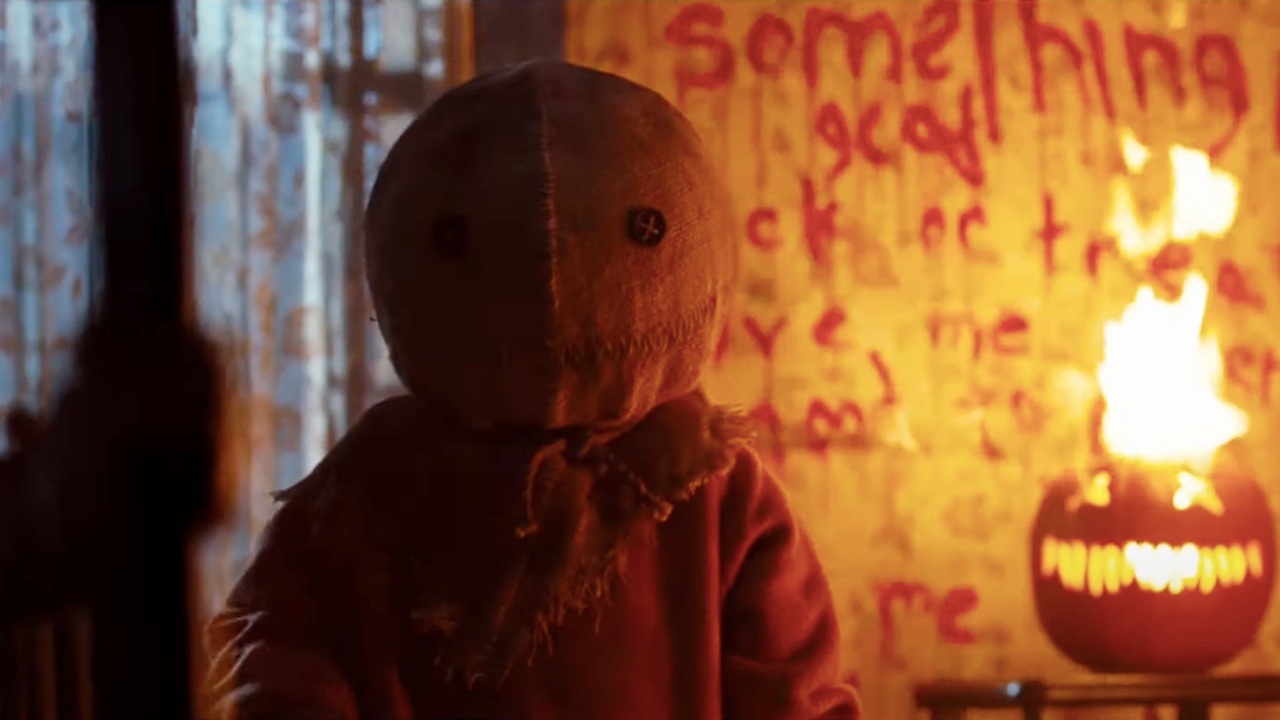
Trick ‘R Treat (2007)
Instead of a by-the-numbers horror anthology, Michael Dougherty’s Trick ‘r Treat takes a more Pulp Fiction-esque approach to telling multiple clever and comically creepy stories of one unique Halloween night, bound by a mischievous trick-r-treater named Sam, whom fans now consider to be the holiday’s de facto mascot. Thanks to the cult following a sequel is in the works from its original filmmakers.
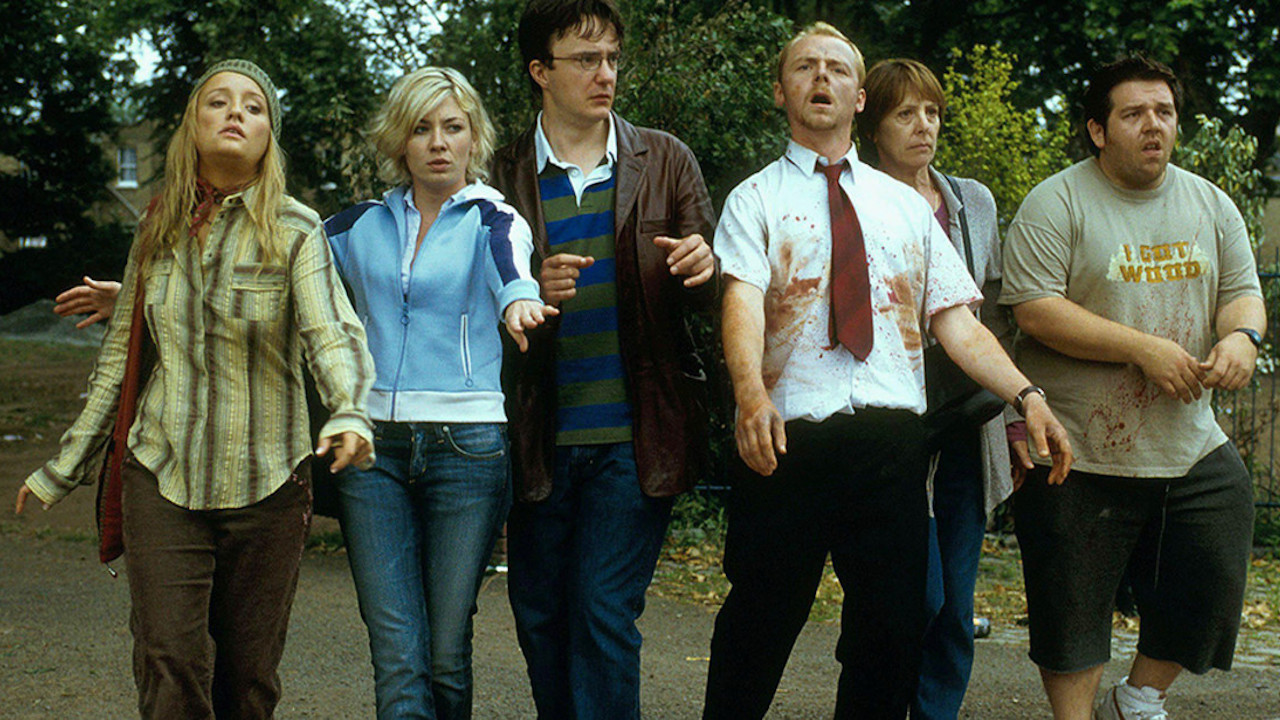
Shaun Of The Dead (2004)
From the minds of star Simon Pegg and director Edgar Wright, Shaun of the Dead (which The Walking Dead later paid homage to) is a slice of fried gold, as quotable as it is blood-soaked and hilarious, that gave the zombie genre the «hometown bloke» spin and turned Pegg’s Shaun and Nick Frost’s Ed into legitimate movie heroes.
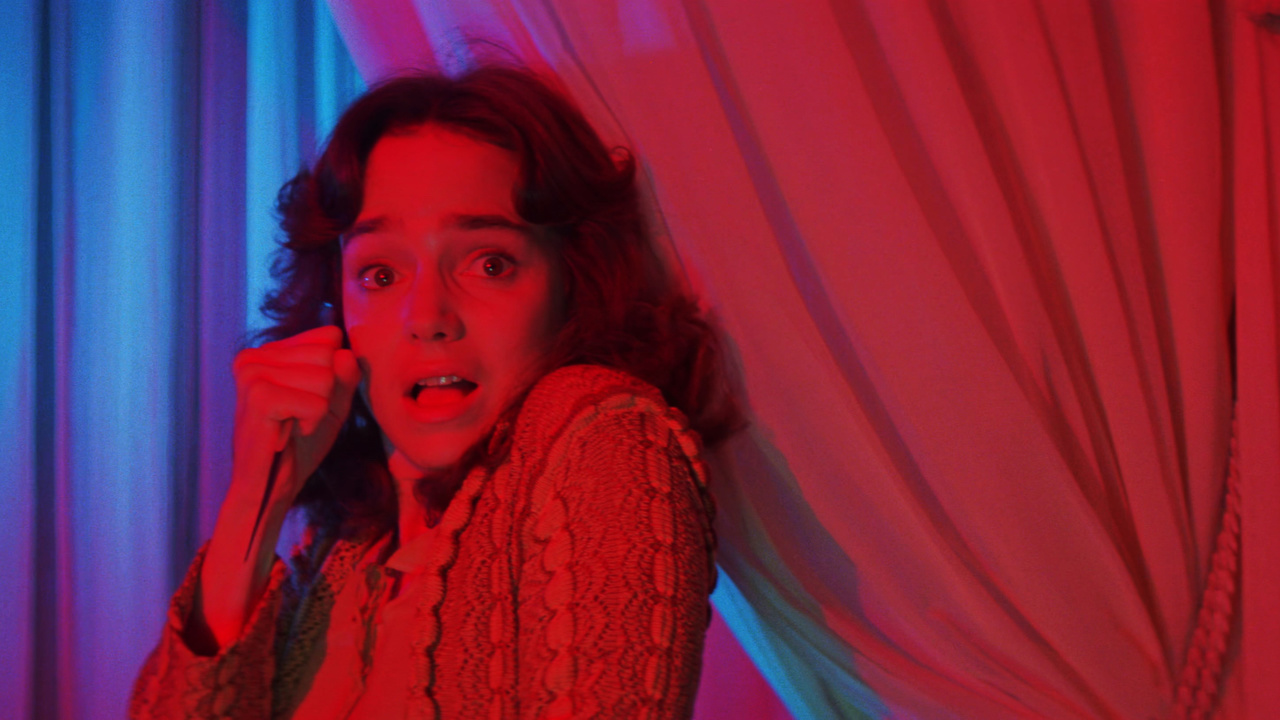
Suspiria (1977)
No Italian Giallo auteur left a mark on horror quite like Dario Argento did with Suspiria — a virtual nightmare captured on film about an American ballet student at a prestigious German dance academy, where sinister supernatural forces leave a trail of violent, grisly murders.
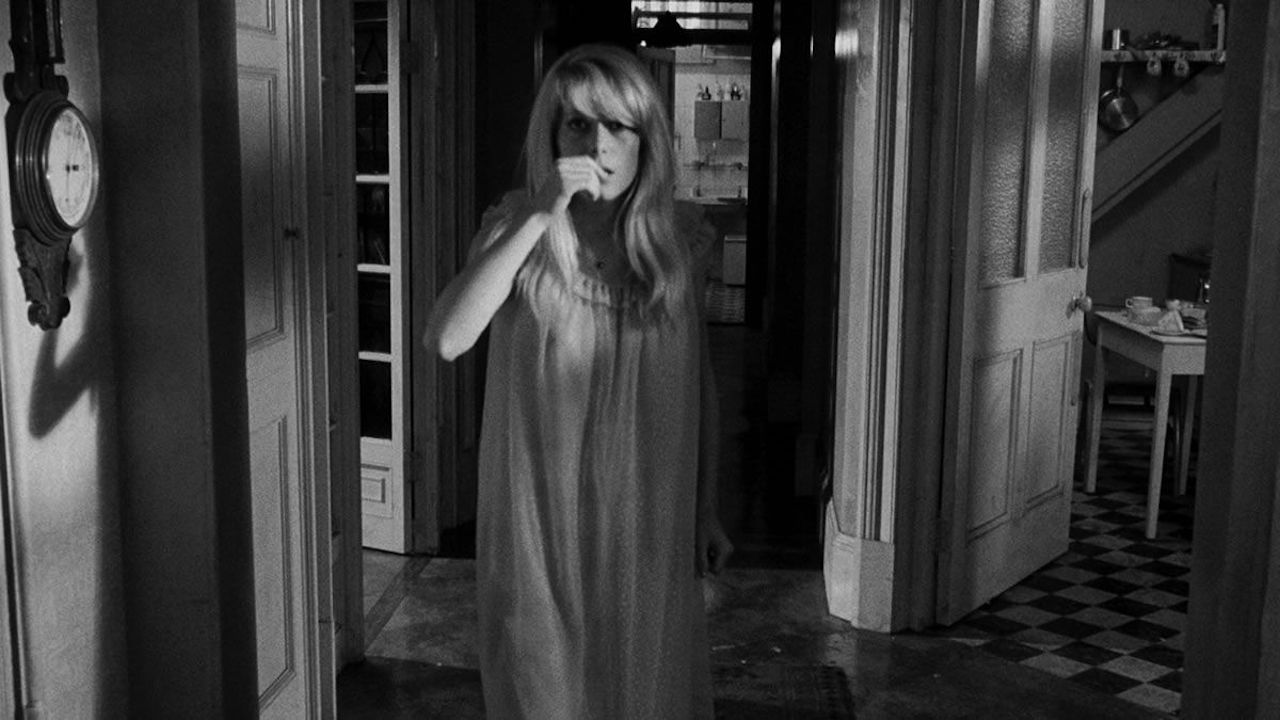
Repulsion (1965)
You don’t need monsters and jump scares to make a truly terrifying film — case in point: Roman Polanski’s psychological horror classic Repulsion, in which a sexually averse woman is tormented by horrific visions and hallucinations when her sister leaves her alone for a holiday.
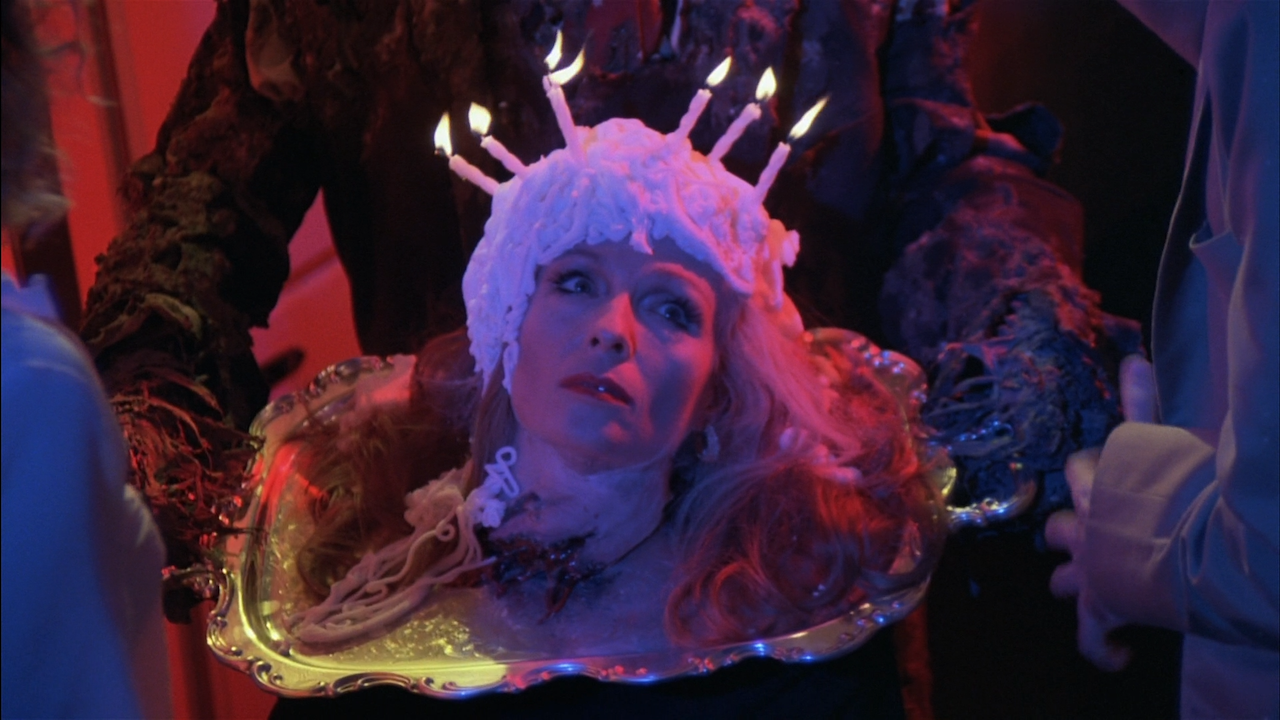
30. Creepshow (1982)
Anthology horror has seen many great additions in recent years, from the fun, aforementioned Trick r Treat to the raw, found footage favorite V/H/S in 2012, but neither would exist without Creepshow — a partnership of screenwriter Stephen King and director George A. Romero that practically predates Sin CIty in how reflectively it pays homage to creepy comic books of the 1950s. Its five increasingly bizarre stories include a meteorite’s hair-raising effect on a farmer (played by King), a wealthy cuckold who discovers revenge is a two-way street, and easily the most effectively exploitative use of cockroaches ever. The legacy of this star-studded, often enjoyably wacky thriller lives on in a TV series spin-off.
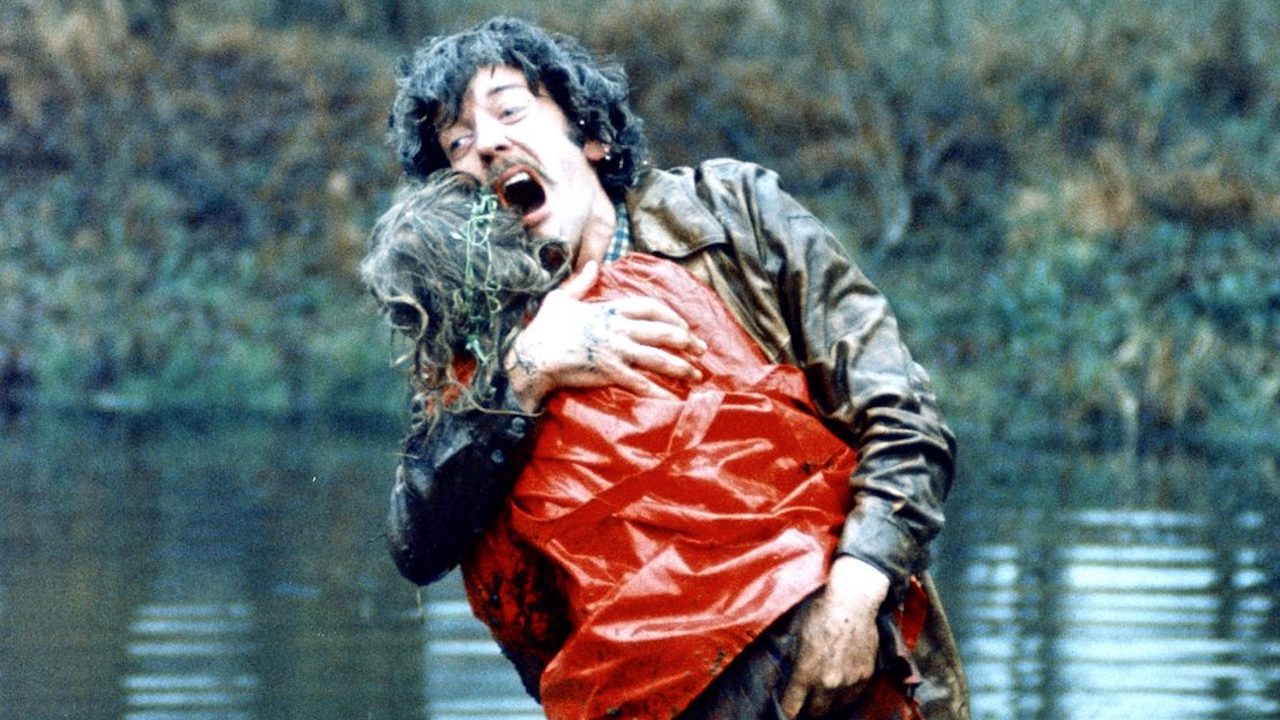
29. Don’t Look Now (1973)
When a married couple (Donald Sutherland and Julie Christie), attempting to come to terms with the death of their young daughter, travel to Venice, they’re haunted by a series of mysterious occurrences and reminders of death after an encounter with two elderly sisters comes with warnings from beyond. Clearly wearing Hitchcockian influences on his sleeve, Nicolas Roeg’s 1973 thriller Don’t Look Now employs occult sensibilities, explores the impact of grief on a relationship, and delivers a chilling, menacing story, tinged with melodrama and the supernatural, that sticks with you long after watching. Psychologically and thematically dense, it’s an examination of the human psyche as filtered through the lens of a tense, tight horror thriller.
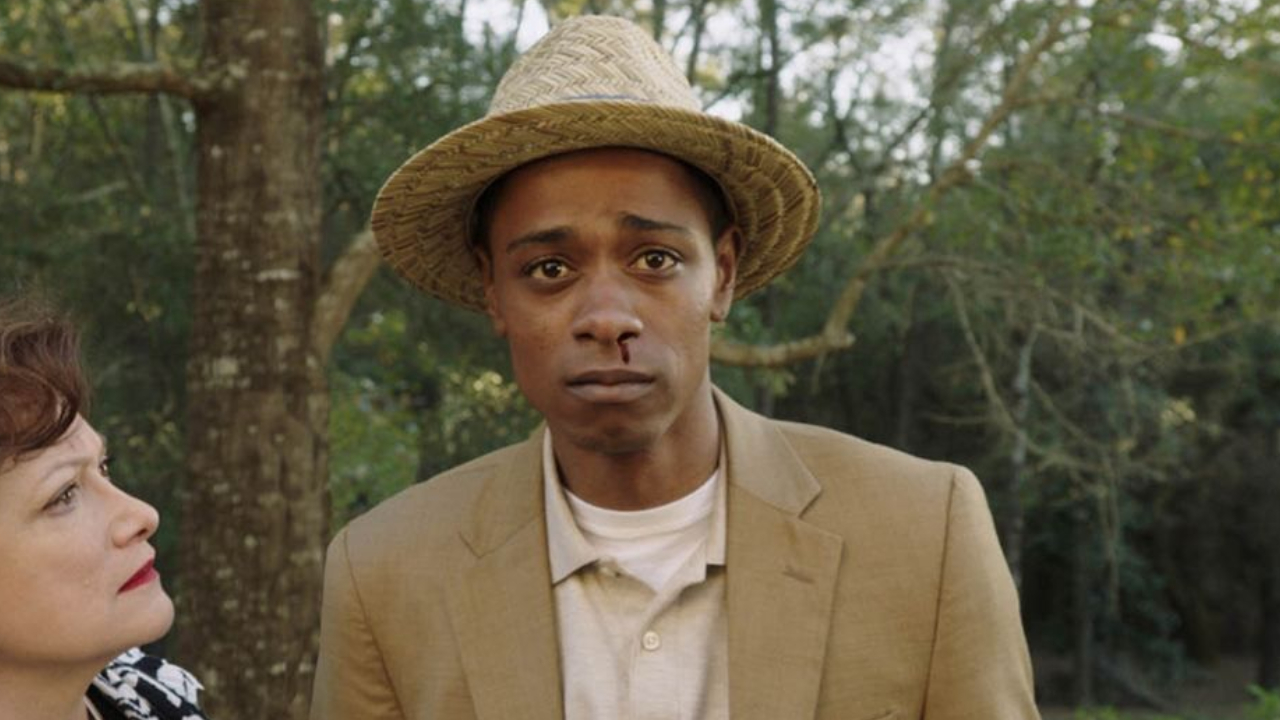
28. Get Out (2017)
No one could have predicted that Jordan Peele, one half of the dynamite comedy duo Key & Peele, would become one of the most (if not the most) respected horror auteur of his generation. Even more unexpected was the game-changing success of his Academy Award-winning directorial debut in which a young, Black photographer’s (Oscar nominee Daniel Kaluuya) experience meeting his white girlfriend’s family home makes Ben Stiller’s face-off with Robert DeNiro in Meet the Parents look like a dream. Joking aside (of which there is plenty of that in a darkly satirical sense here), Get Out is one of the most important films of any genre or any time as a smart and honest (albeit a tad exaggerated) portrait of racial injustice that thankfully made social commentary in horror cool again.
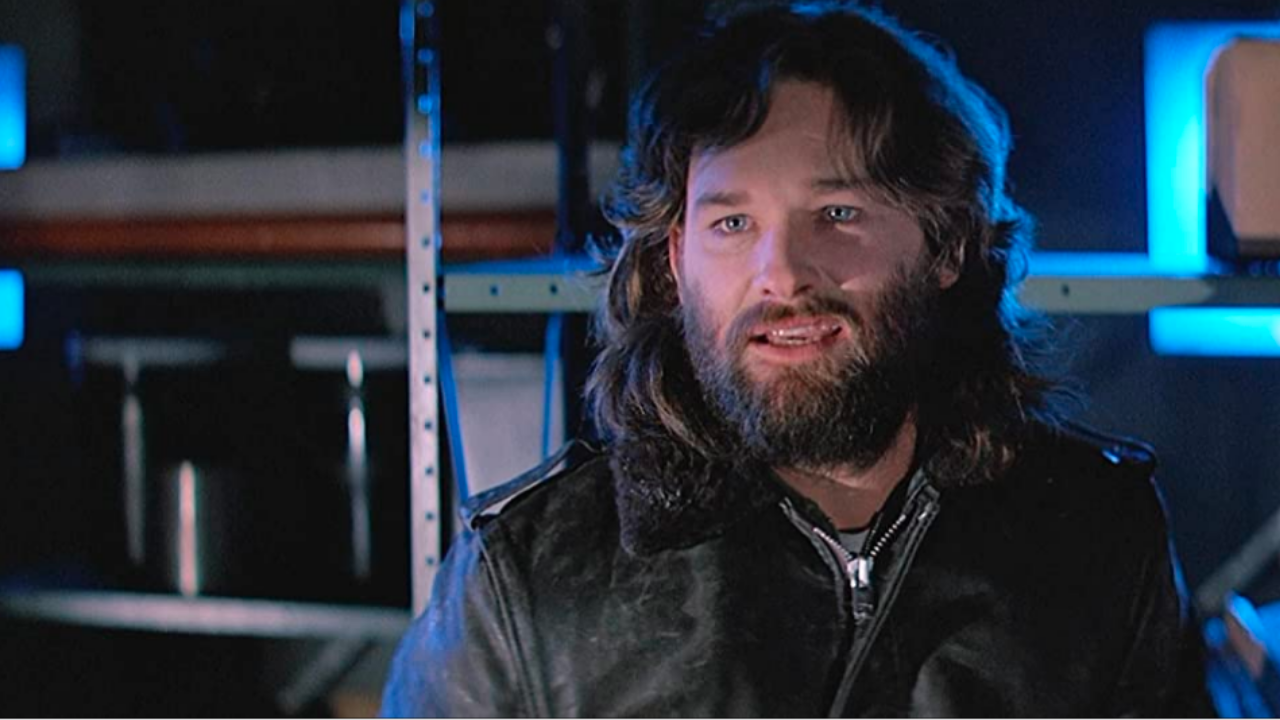
27. The Thing (1982)
Like many great horror movies (the ones that endure over the years), John Carpenter’s 1982 reworking of The Thing From Another World was initially dismissed by most critics as being nothing more than an excessive gross-out schlock film. However, in the decades since its release, it has been reappraised and become recognized as one of the great offerings of the genre.
A jagged sci-fi thriller that continually creates a tense, taut atmosphere of paranoia and doubt, The Thing follows the rugged crew at an isolated Antarctic research facility as they’re besieged by an alien presence that can assume the form of anything it touches. Playing to gut-level fears and using grotesquely memorable practical creature effects, this is Carpenter, one of the masters of horror, working at the very top of his game. The ambiguous ending is still the subject of great conversation and debate.
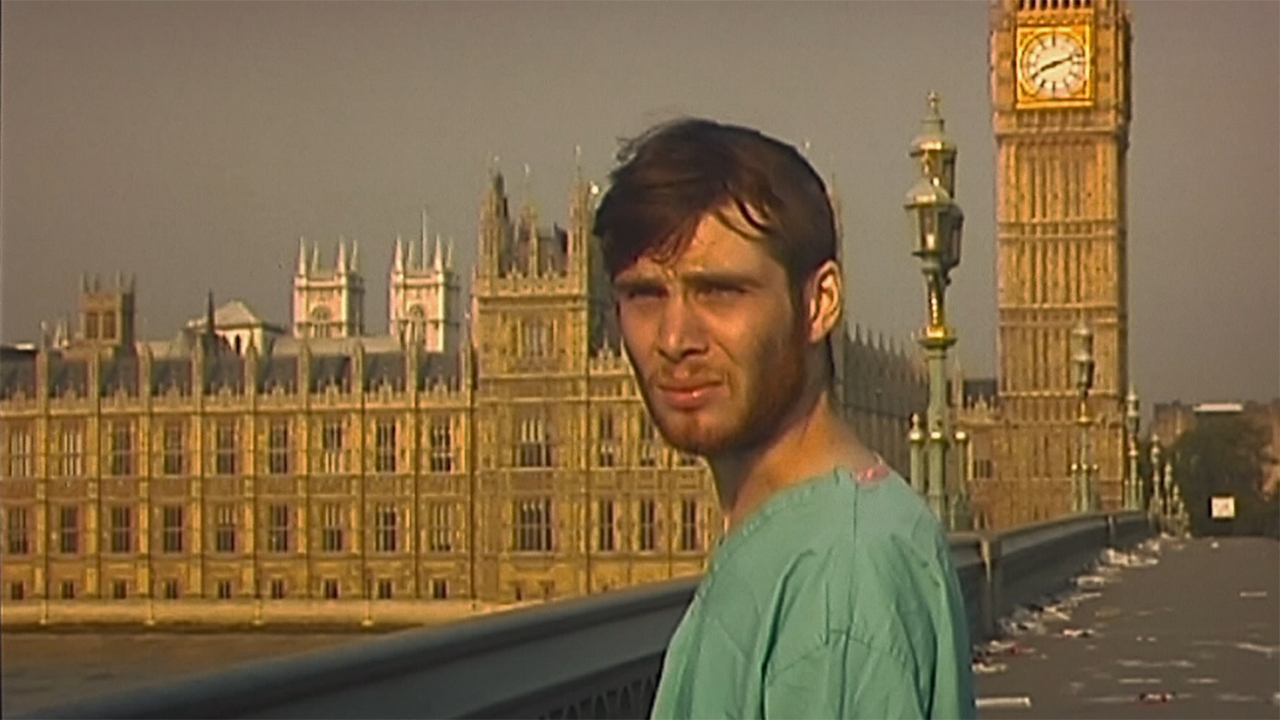
26. 28 Days Later (2002)
No one can argue that George A. Romero is the godfather of zombie movies, but with the surprisingly effective 28 Days Later, director Danny Boyle became the genre’s cool uncle who would show up with a case of beer and a couple of sledgehammers with this innovative, post-apocalyptic hit from 2002. Headed by Cillian Murphy at his most hypnotic, and from a script penned by future Ex Machina filmmaker Alex Garland, 28 Days Later technically replaced the undead kind of zombies with fast-moving abominations fueled by a rage virus, but it still fits into (and sits near the top) of the subgenre.
What starts as a stunning and contemplative look at a London mostly devoid of people turns into a rapidly worsening slide into terror as Murphy’s Jim and his fellow survivors come face to face with the somewhat predictable but still hideous outcome of such a population-depleted planet. Winning performances from Naomie Harris, Brendan Gleeson, and Christopher Eccleston only add to its superiority.
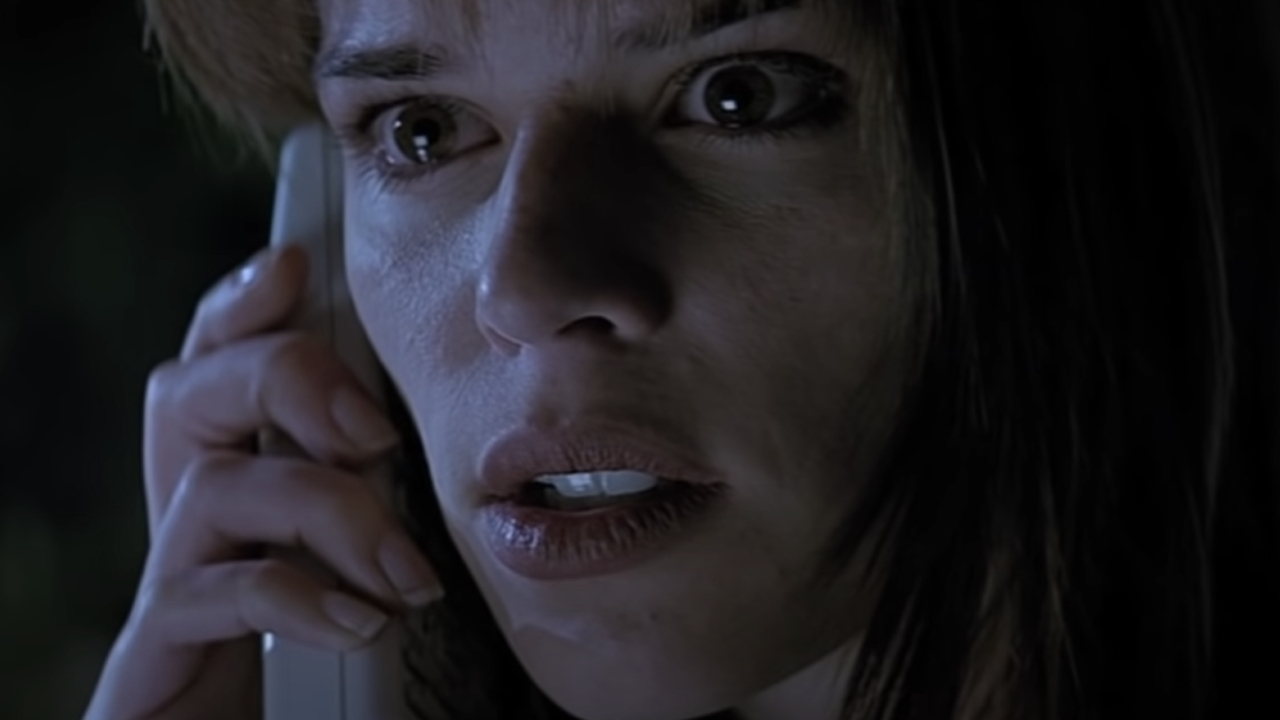
25. Scream (1996)
In the current landscape, it’s practically impossible to have a horror movie that doesn’t have meta, self-referential elements. You can thank the pairing of horror master Wes Craven and first-time screenwriter Kevin Williamson on this 1996 film for that. As annoying as this trope has become in recent years, as handled by Craven, Scream was a game changer. Using comedy, a whodunit-style mystery, and every slasher cliché in the book, this mixture is a masterful work of genre subverting satire that honors the history of horror, deconstructs what came before, and also blazes a bold new trail. Beyond any academic praise you want to heap on the film, at the same time Scream is a great horror film, one that is inventive and funny and harrowing all at the same time.
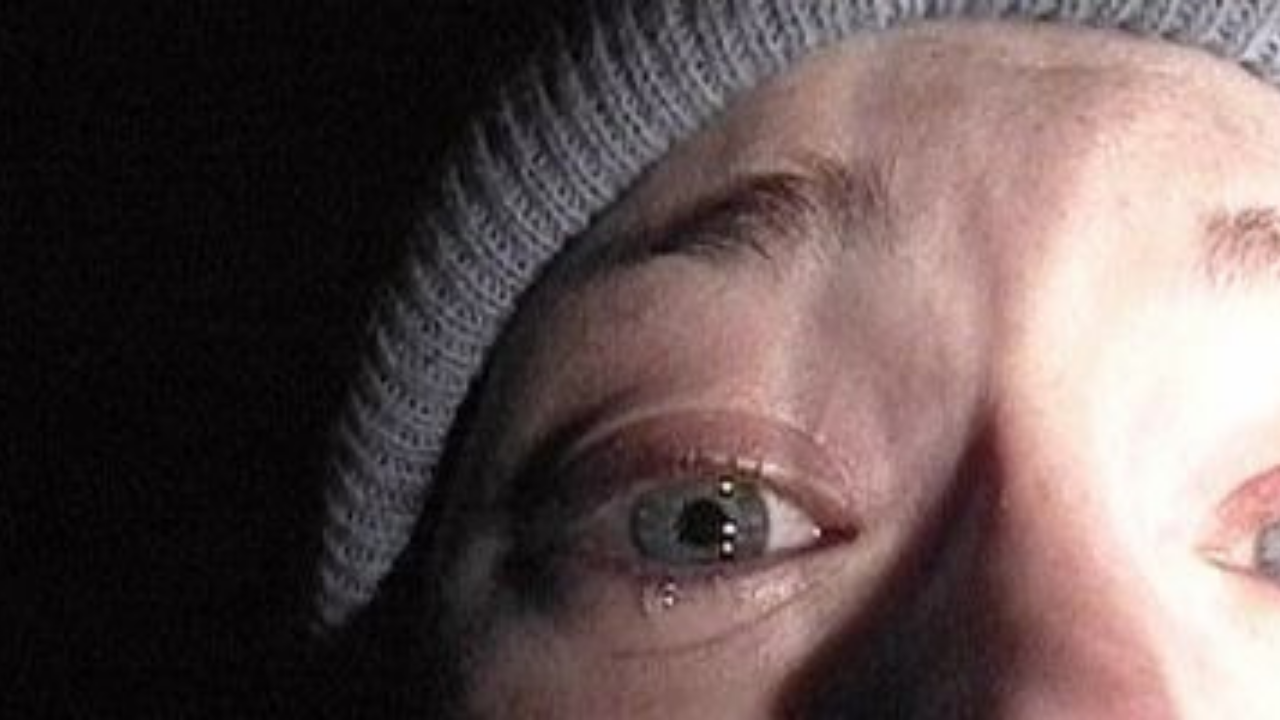
24. The Blair Witch Project (1999)
Similar in spirit (if not style) to William Castle’s attempts in the 1950s and 1960s to give more than just what made it to the screen, 1999’s The Blair Witch Project was bolstered by fairly extensive pre-release buzz that sold the central story of three missing documentary filmmakers as genuine truth. It’s safe to say that approach was effective, as the film eventually grossed almost $250 million worldwide on a $60,000 budget, though the actual truth did come out in those post-release weeks.
In 1999, «found footage» movies were few and far between, but Daniel Myrick and Eduardo Sanchez’s acclaimed hit changed all that, and its influence on the genre is immeasurable at this point, for better or worse. By choosing indirect and abstract scares to keep viewers unsettled, and letting «real» emotions come through as the characters make their way to the ambiguous final sequence, The Blair Witch Project still stands (in a corner of the room) a head above most others. Rarely has a less-is-more strategy panned out so successfully.
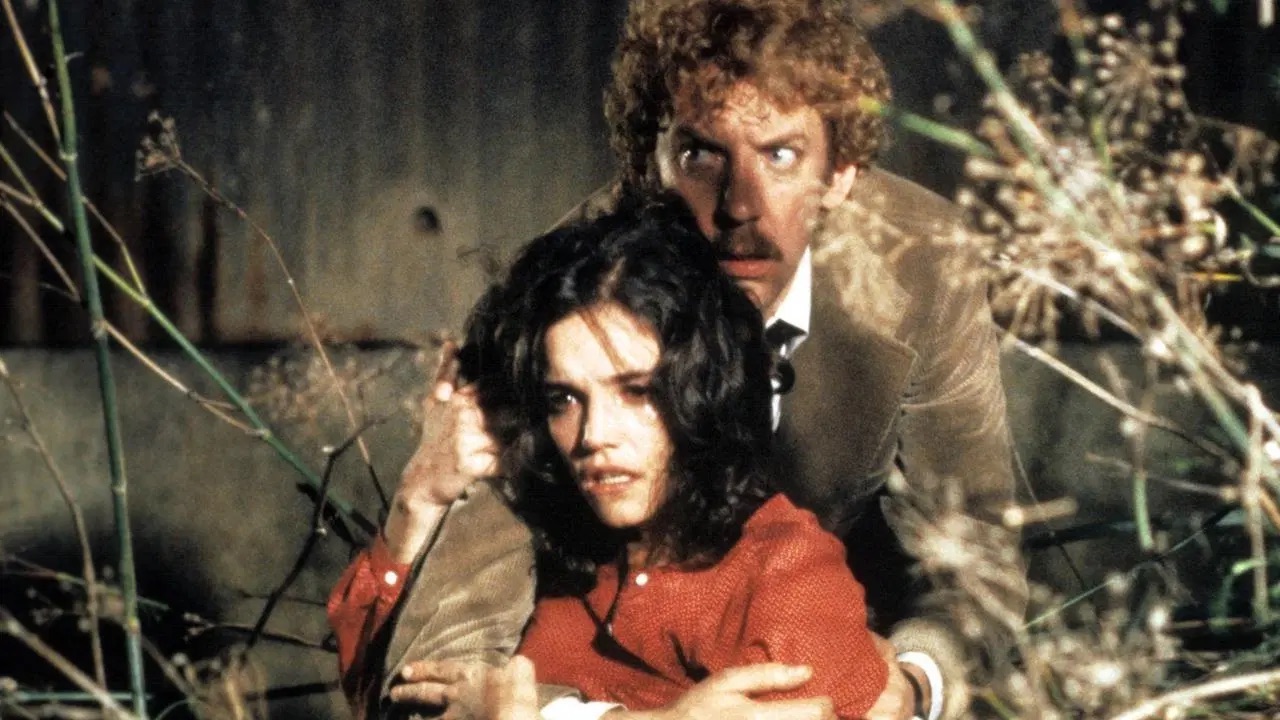
23. Invasion Of The Body Snatchers (1978)
An argument can be made that only bad films should get the remake treatment, but 1978’s Invasion of the Body Snatchers is a monolith of an exception. Perhaps it isn’t better in every way than the 1956 version (also based on Jack Finney’s novel), but it’s one hell of a lot more effective as a horror film. Kicking off a solid run of films for director Philip Kaufman, Invasion of the Body Snatchers is the pod people movie to rule them all, and its legacy is cemented by stars Donald Sutherland, his mustache, and Brooke Adams (not to mention Jeff Goldblum and Leonard Nimoy), as well as some of the most fabulously disgusting special effects of the decade. The film also exhibits its 1970s-ness with a smart and fat-free script, a superbly restrained score, and an approach that treats these characters like human beings, rather than puppets being led to the slaughter (or wherever you want to call that psyche-shattering mutant dog).
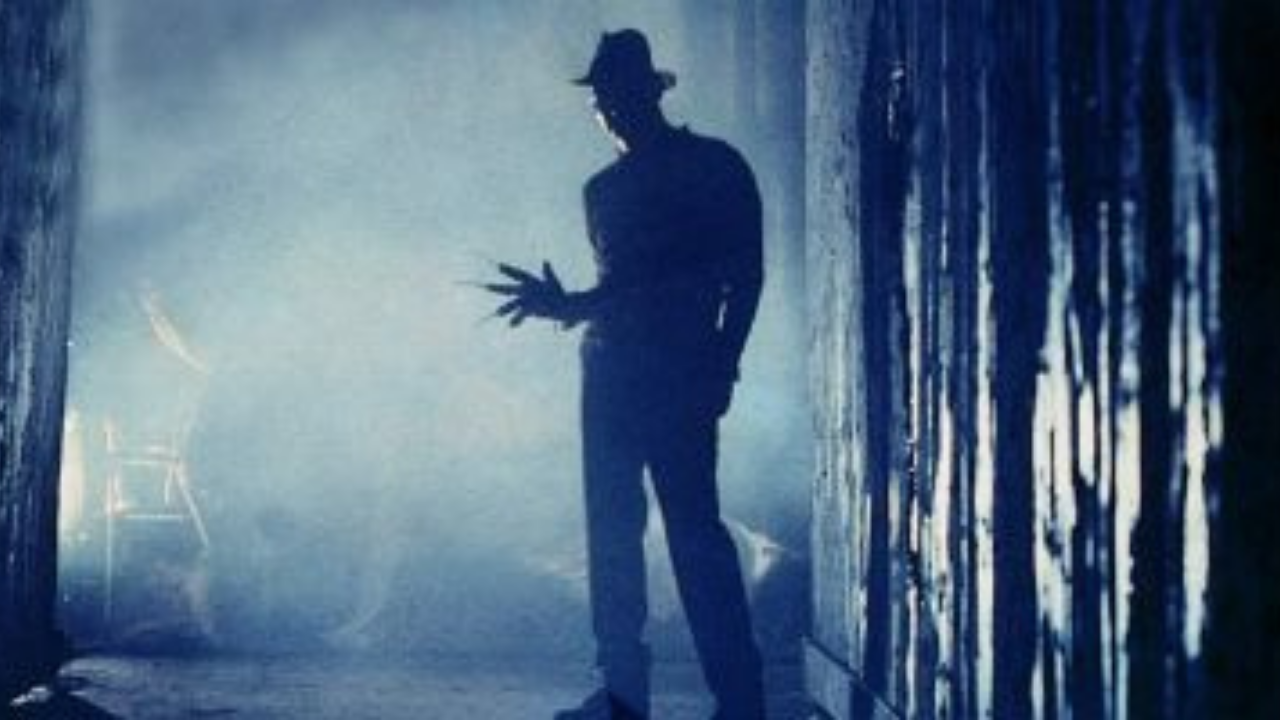
22. A Nightmare On Elm Street (1984)
The only franchise I can recall that made jumping rope unnervingly creepy, the A Nightmare on Elm Street films, remain championed more than most genre series for never fully settling into haphazardly conceived dreck. And it all started with Wes Craven’s 1984 original, which took the slasher formula and imbued it with the thought-provoking dream logic of its morbidly compelling baddie: the resurrected pile of sweater and scars that is Freddy Krueger (played brilliantly by Robert Englund).
Everything a horror fan could hope for is in A Nightmare on Elm Street. Freddy is the greatest movie monster of all time, the cast (including an infant Johnny Depp) is perfect, the backstory is chilling and the kills… come on, now. Freddy’s glove is a masterpiece of weaponry, but this movie’s best deaths were Tina’s, in which her bleeding body is dragged all over her bedroom’s walls and ceiling, and Glen’s, whose murder results in a wonderful geyser of blood shooting up from his bed. Depp’s character said it best: «Midnight. Baseball bats and boogeymen. Beautiful.»
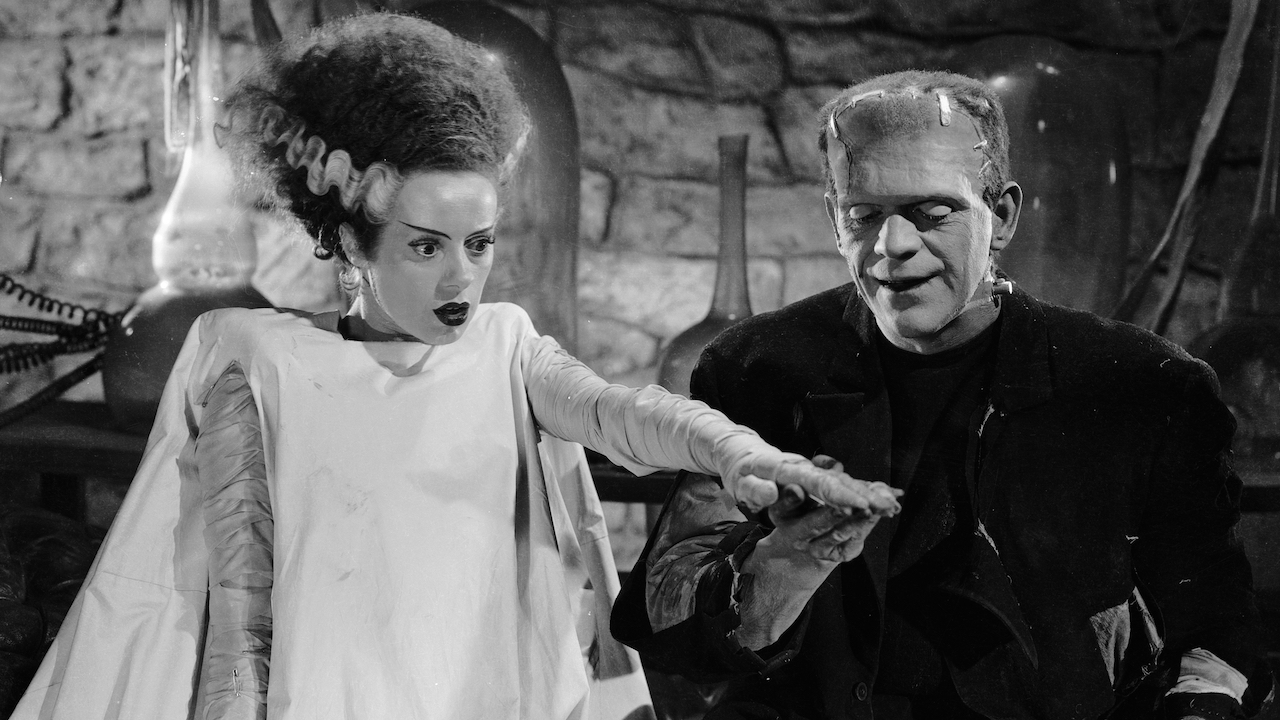
21. The Bride Of Frankenstein (1935)
When The Bride of Frankenstein was first released in 1935, there was thankfully no Internet where people could argue over the value of movie sequels. Acclaimed but not entirely beloved upon its release, James Whale’s follow-up to his own 1931 classic is now largely accepted to be a cut above its predecessor in this new world of gods and monsters.
With Ernest Thesiger eagerly welcomed as Henry Frankenstein’s former mentor Doctor Pretorius, The Bride of Frankenstein tells the ghastly next chapter in the story of Henry and Boris Karloff’s Monster, treating viewers to visual and aural splendor for a grisly tale that climaxes in the creation of the Monster’s Bride, played with magnificence by Elsa Lanchester and her unforgettable hair. The Bride is sadly only in the movie for a brief period, but her «birth» is an indelible moment in cinema. One can only wonder what the film would have been like had it not been a big target for censorship.
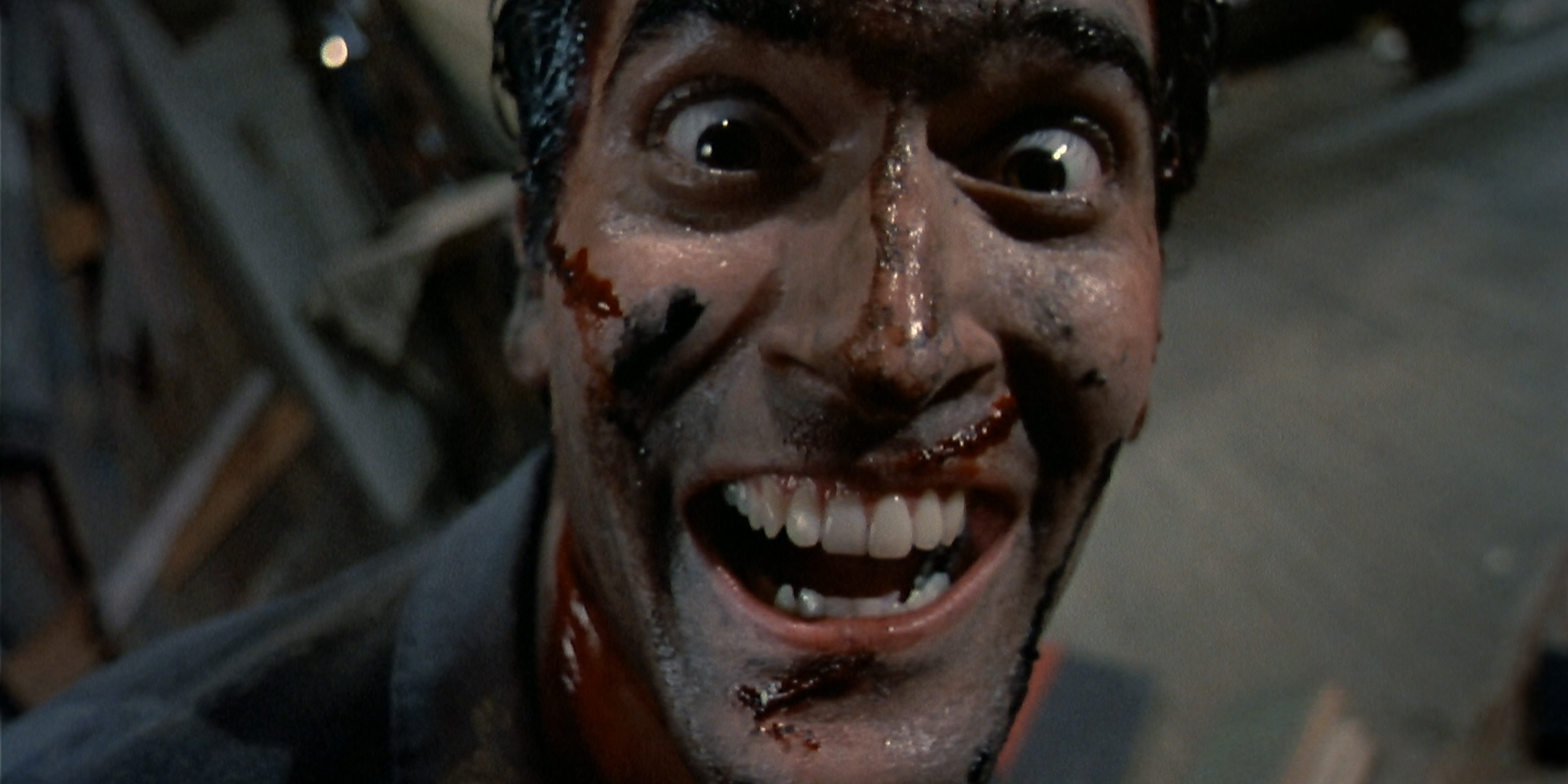
20. Evil Dead II (1987)
Hail to the king of modern horror follow-ups, baby. As unexpectedly fantastic as 1981’s The Evil Dead was, director Sam Raimi and star Bruce Campbell were older and more mature by the time Evil Dead II really started coming together in 1986, and it definitely showed. Everything is sharper, wilder and more disgusting this time around, as Ash finds himself both the deadite-killing protagonist and the possession-plagued antagonist, still stuck in cinema’s most interesting cabin in the woods.
It’s almost hard to count all the ways Evil Dead II is, just about, the greatest horror-comedy movie of all time, though we’ll namecheck special effects genius Greg Nicotero (of Walking Dead fame), Ash’s iconic chainsaw hand, Jake getting munched by Henrietta, Ash’s hallucination that everything in the room is alive, and obviously that left-field ending that led to Army of Darkness. While the story behind Evil Dead II might not stick with viewers as much as other horror classics, there are no missteps here. It’s all groovy.
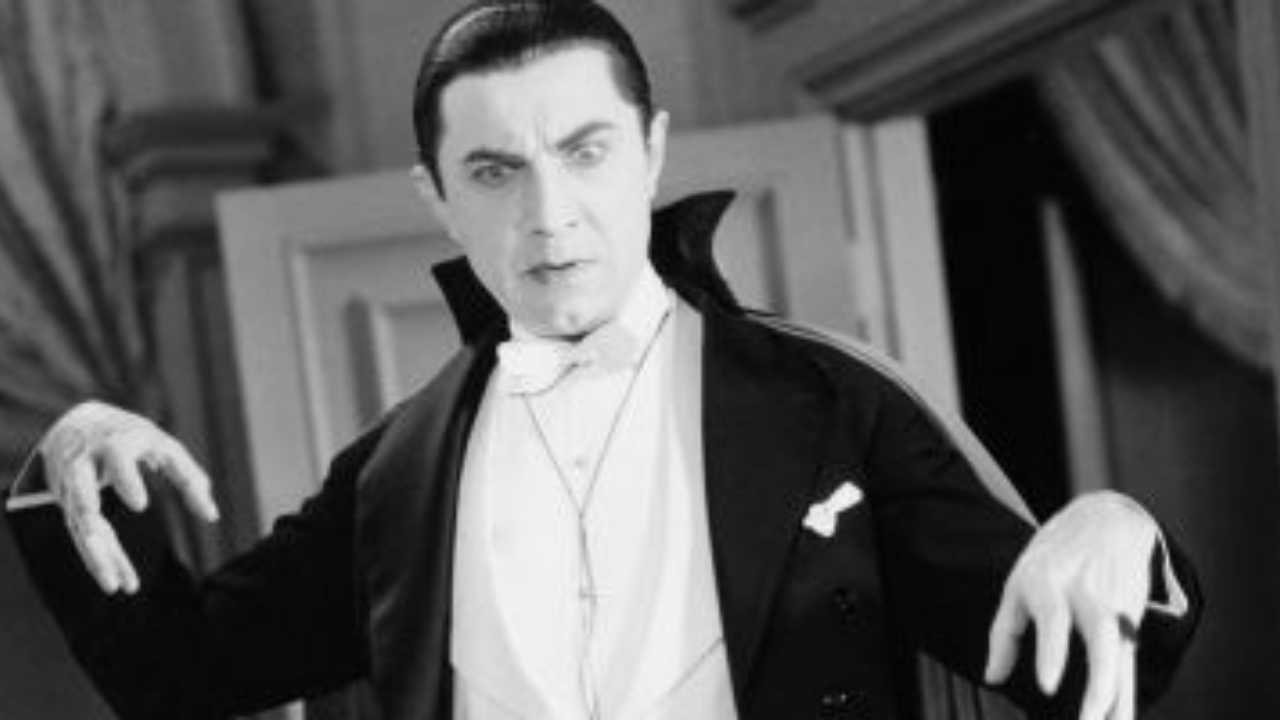
19. Dracula (1931)
While Nosferatu was the first film to tell a version of this story, albeit in a different form due to rights issues with Bram Stoker’s novel, Todd Browning’s 1931 Dracula was the first proper adaptation. Anchored by the most iconic, memorable turn of Bela Lugosi’s monumental career—one that would see him become a true genre and cultural symbol—this was the first of Universal’s early horror slate (Frankenstein followed later that year), and helped define the genre in ways that are still in place today. As influential as Dracula has been, it’s easy to lose sight of just how spooky, eerie, and genuinely terrifying it still is, even as the tropes and iconography it established have woven their way into the lexicon of horror.
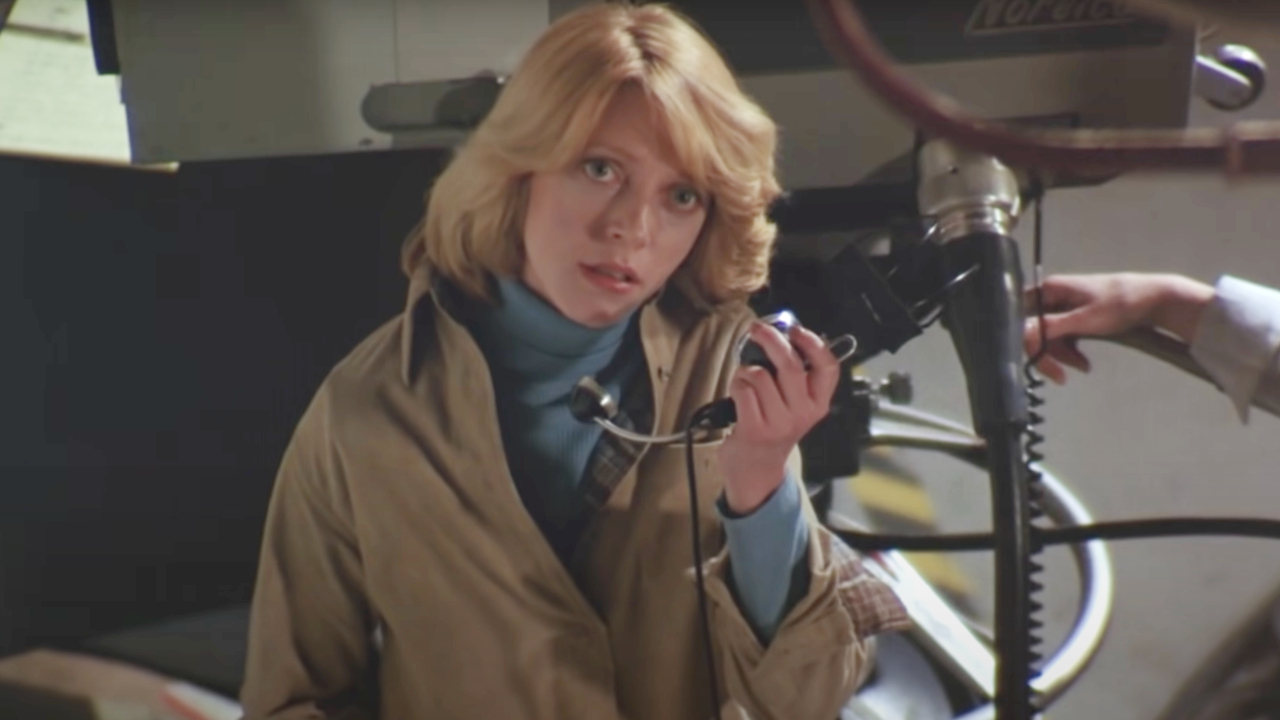
18. Dawn Of The Dead (1978)
Few directors are able to pull such a startling about-face between one film and its sequel as George A. Romero did with 1978’s Dawn of the Dead,— the subversive and gore-soaked follow-up to Night of the Living Dead, which came out a decade earlier. Both the world and the filmmaker were in a completely different place, and Romero decided to sick his undead monstrosities on capitalism and class struggles via the shopping mall.
Dawn of the Dead is a horror fan’s wet dream, trading in any form of dense and labyrinthine narrative for some dread-laden intensity, some incredible special effects (from legend Tom Savini) and some really inventive kill scenes, all layered with not-quite-tongue-in-cheek satire. The source of a successful Zack Snyder remake that retained little of the social commentary, Romero’s Dawn of the Dead is the crowd-pleasing horror fest that can also start an important conversation once the entrails have dried.
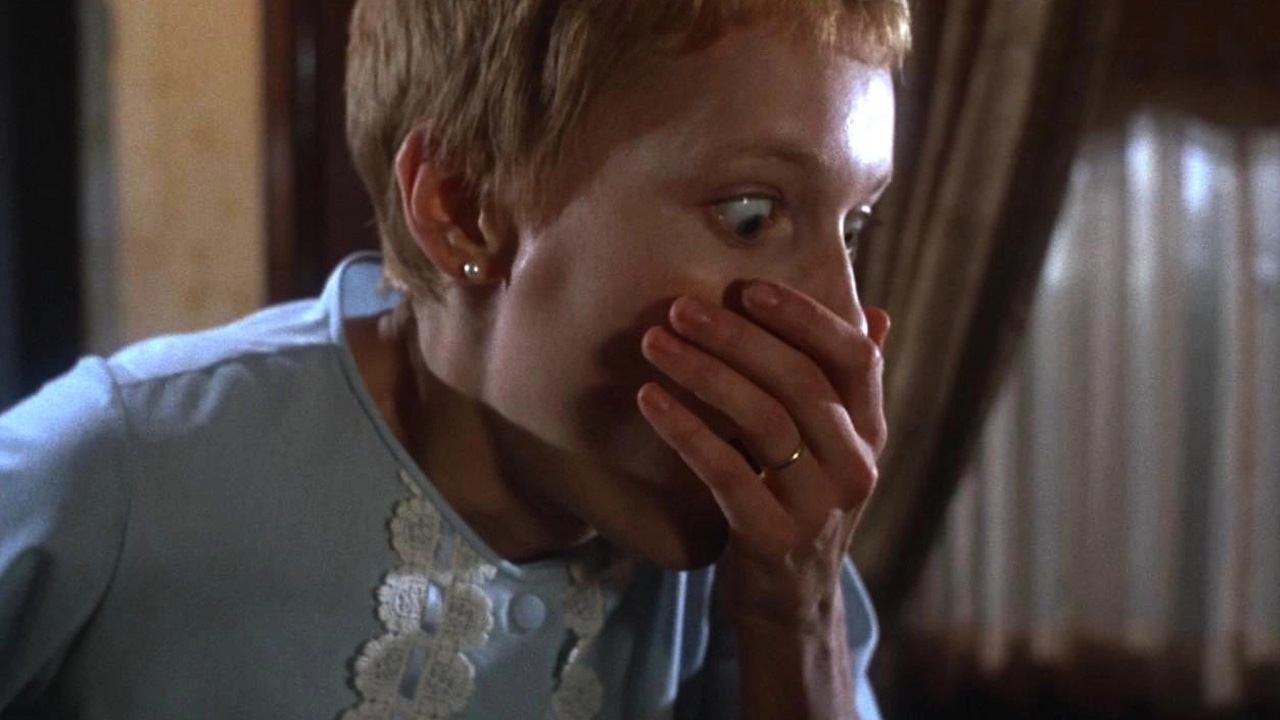
17. Rosemary’s Baby (1968)
Roman Polanski’s 1968 psychological horror film, Rosemary’s Baby, is like a master class on cinematic terror and tension. Every aspect is infused with dread and foreboding, even the most innocuous domestic moments. At the same time it’s grounded in concrete, in reality, playing upon the inherent fears and dread of parenthood, there’s also a demonic side, as the forces of evil and darkness work against a young couple played perfectly by Mia Farrow and John Cassavetes. When they attempt to start their own family, their journey takes them in dark, sinister directions. Rosemary’s Baby is not gory, nor is it particularly violent, but what it does is ratchet up the tension and pressure until you’re on the verge of bursting.
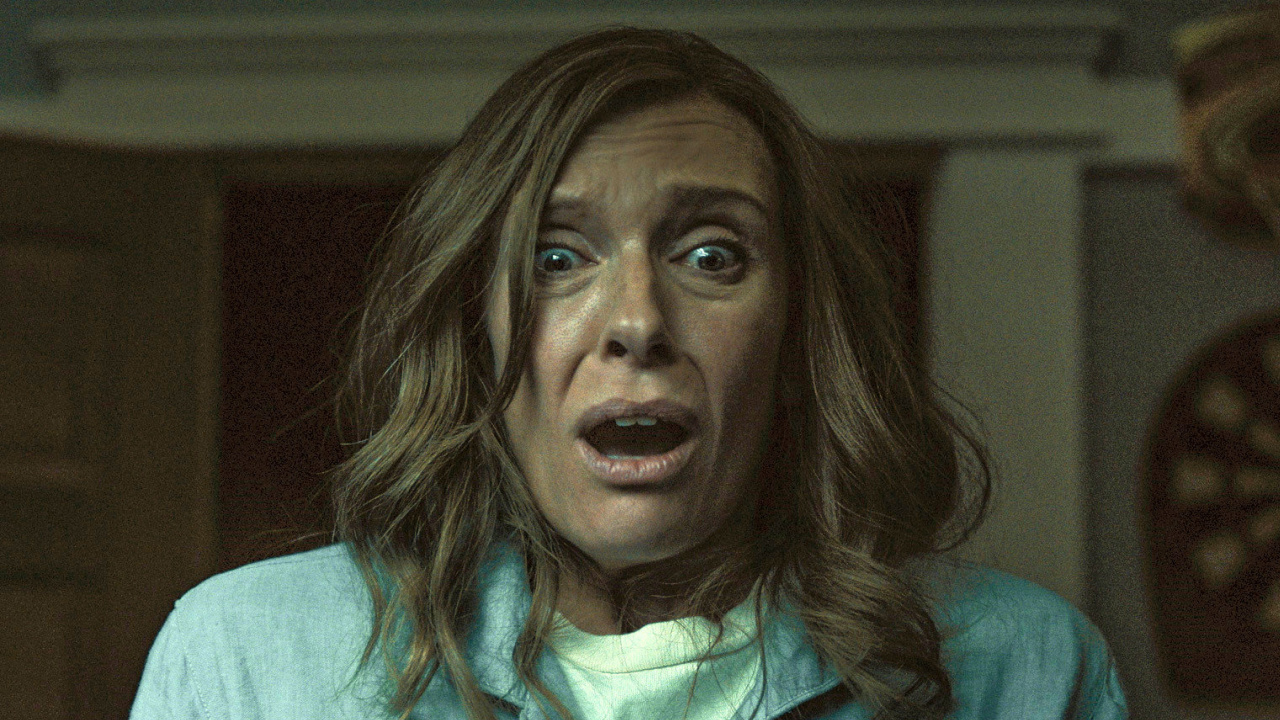
16. Hereditary (2018)
Speaking of pressure, nothing puts more weight on a person’s soul than family drama and few films articulate that struggle to its most uncomfortable degree than the stunning debut of writer and director Ari Aster. Right off the bat, the filmmaker proved himself as a master of unimaginable dread with this gripping, great A24 movie and portrait of a family plagued by a devastating tragedy as sinister phenomena hiding in plain sight threatens to irrevocably tear them apart. With much credit deserved to Toni Collette’s unfiltered, brilliant performance, Hereditary is the kind of thriller that could have been marketed with phrases common to classic B-movie ads like “Blood-curdling suspense!” or “You will be left speechless!” and it would not have been an exaggeration.
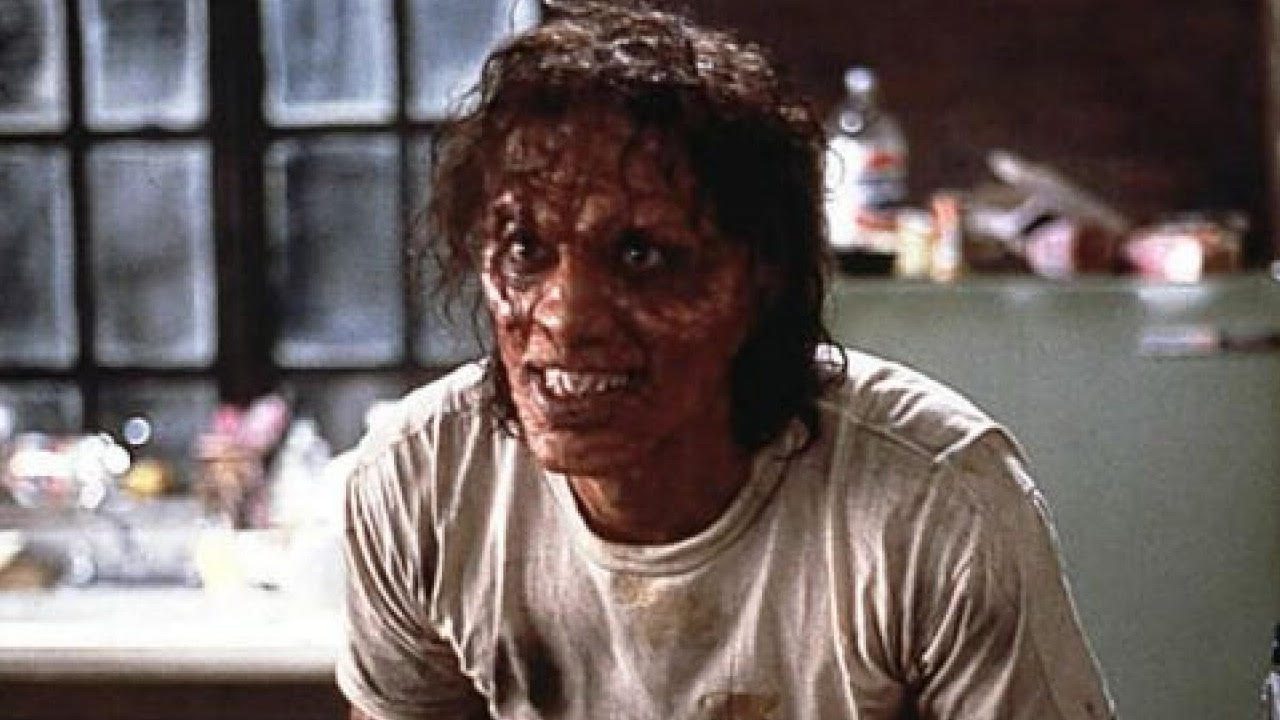
15. The Fly (1986)
Though the latter portion of David Cronenberg’s career is largely safe for mass consumption, the esteemed director’s early years delivered some of the most gloriously disgusting body horror that VHS tapes could handle. While all of his genre films are must-see flicks, Cronenberg’s most honed-in and emotionally charged gore-fest was 1986’s The Fly — the second and superior adaptation of George Langelaan’s short story.
Viewers get a career-best performance from Jeff Goldblum as the impulsive scientist Seth Brundle, who tries balancing a relationship with both magazine journalist Veronica (Geena Davis) and his teleportation pods. A riches-to-rags story through the viscera-covered lens of science-fiction, The Fly takes Brundle from a peak point of humanity to the hellish depths of mongrelism, taking away everything that made him an individual. (Although it’s hard to say he doesn’t retain some form of individuality after everything goes wrong). With some of the best practical effects of anything on this list, The Fly will remain a terrifying treat for as long as people attempt to take science to the extremes.
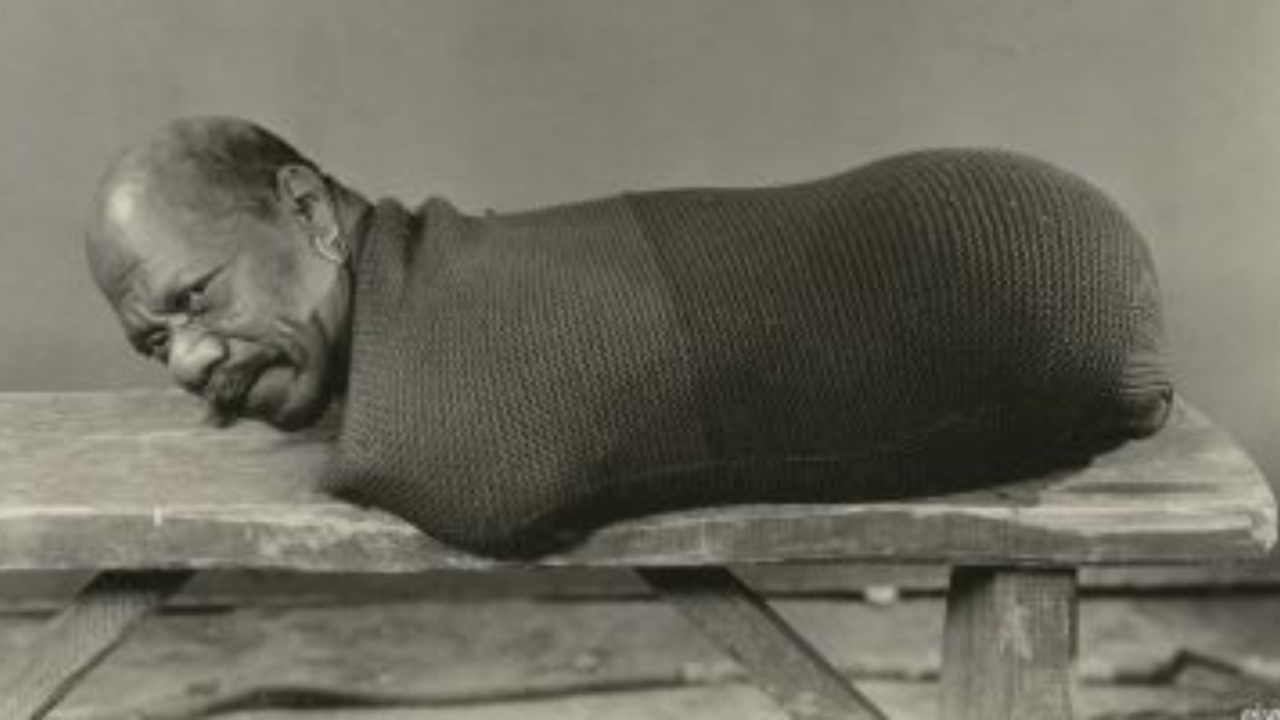
14. Freaks (1932)
More effective in 90 minutes than American Horror Story: Freak Show was in more than a dozen episodes, Tod Browning’s 1932 classic Freaks is one of the most uncomfortable horror films ever made. Many of the «freak» characters were legitimate sideshow performers, making it somewhat reprehensible to be frightened or disgusted by what’s seen on screen (not that they’re the real monsters of the movie anyway). With its signature line of «One of us! One of us!»
Freaks thankfully came in the Pre-Code era, although the final product was still the target of heavy censorship at the time, particularly where that stomach-turning and hand-melting climax was concerned. Perhaps the scariest aspect of Freaks is that, despite being a true gem of a directorial effort, the film completely derailed Browning’s career, regardless of him having directed Bela Lugosi in Dracula just one year before. So much potential, gooba-gobbled up by an American public that wasn’t prepared for it.
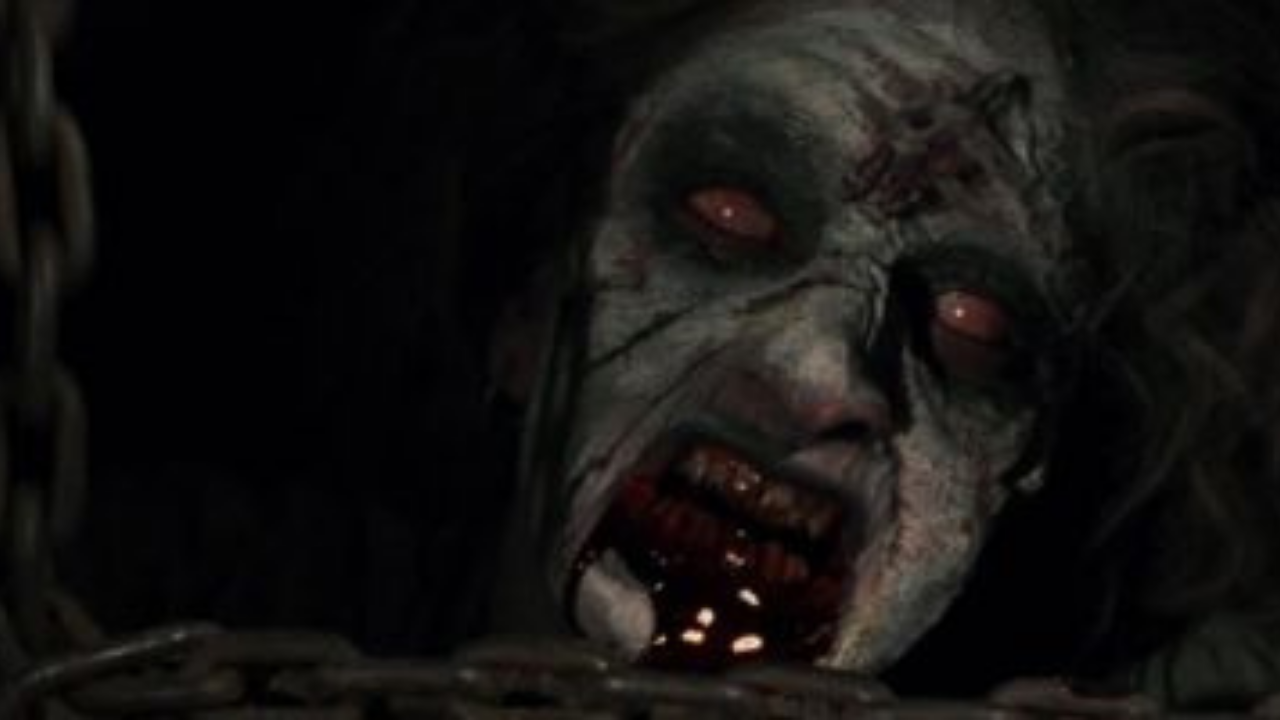
13. The Evil Dead (1981)
No one (the audience, actors, or crew members alike) were prepared for Sam Raimi’s vision of the “ultimate experience in grueling terror,” in which Bruce Campbell’s Ash is tormented by a cruel apparition that has consumed his friends inside and out. While we have already established what makes its 1987 sequel “groovier” in many respects, The Evil Dead still remains the more influential of the franchise for, arguably, giving birth to the supernatural cabin in the woods thriller and as one of the more celebrated “videos nasties” for its bold, unapologetic commitment to pushing the limits of the genre on a shoestring budget. What Stephen King called “the most ferociously original horror film” of its time is now, practically, the definition of ambitious, gonzo, gross-out, cult horror and Raimi remains the patron saint of those who aspire to create that next kind of classic.
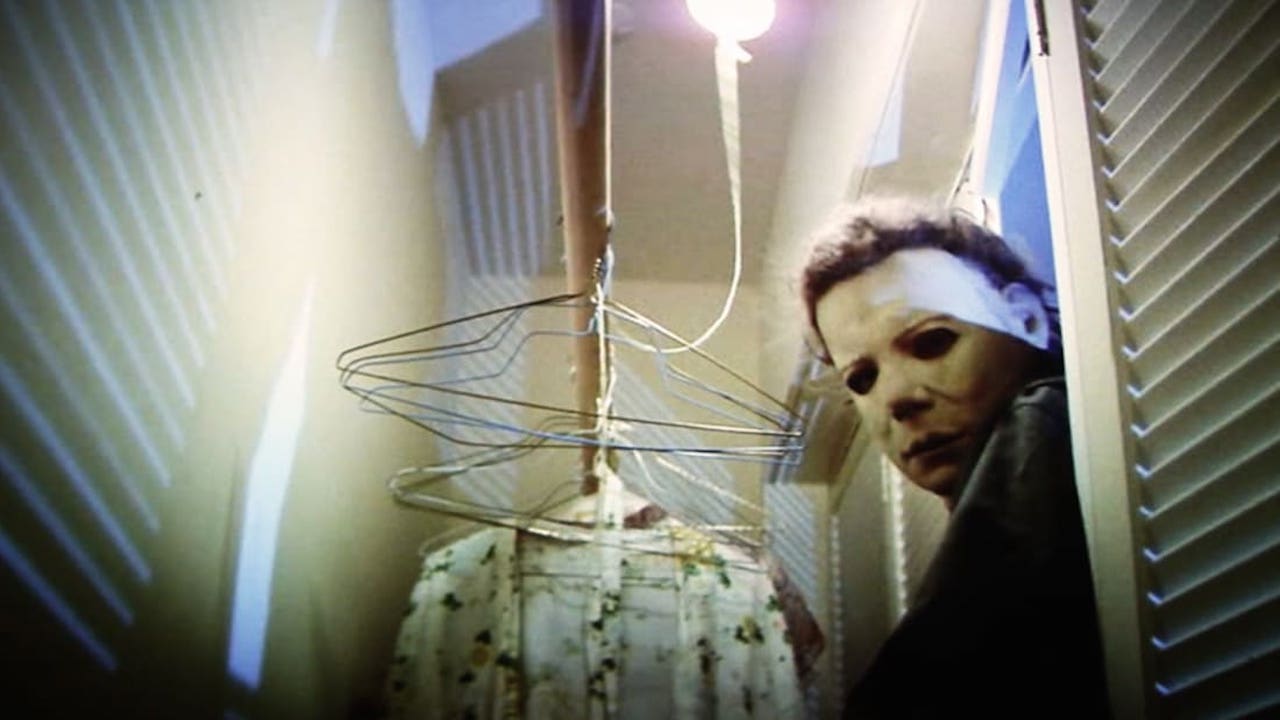
12. Halloween (1978)
Before slasher movies became a dime a dozen — with that dozen sometimes composing just one franchise — John Carpenter created the subgenre’s first benchmark with 1978’s Halloween: the night Michael Myers came home. Low-budget even for the time, Halloween puts every iota of its production process on the screen, from the elementary-and-now-iconic Michael Myers mask to John Carpenter’s iconic, no frills piano score. The movie also set the bar for so many future tropes, such as the killer who escapes from an asylum and a non-damsel final girl taking the lead. In this case, the latter was played with Scream Queen regality by Jamie Lee Curtis in her breakout role. Halloween can still make one scared of what might be standing behind the neighbor’s bushes, or what could be waiting upstairs in that corner always cloaked in shadows. It’s not only (easily) the best film of the franchise, including the remakes, but it’s also the apex of John Carpenter’s entire amazing career.
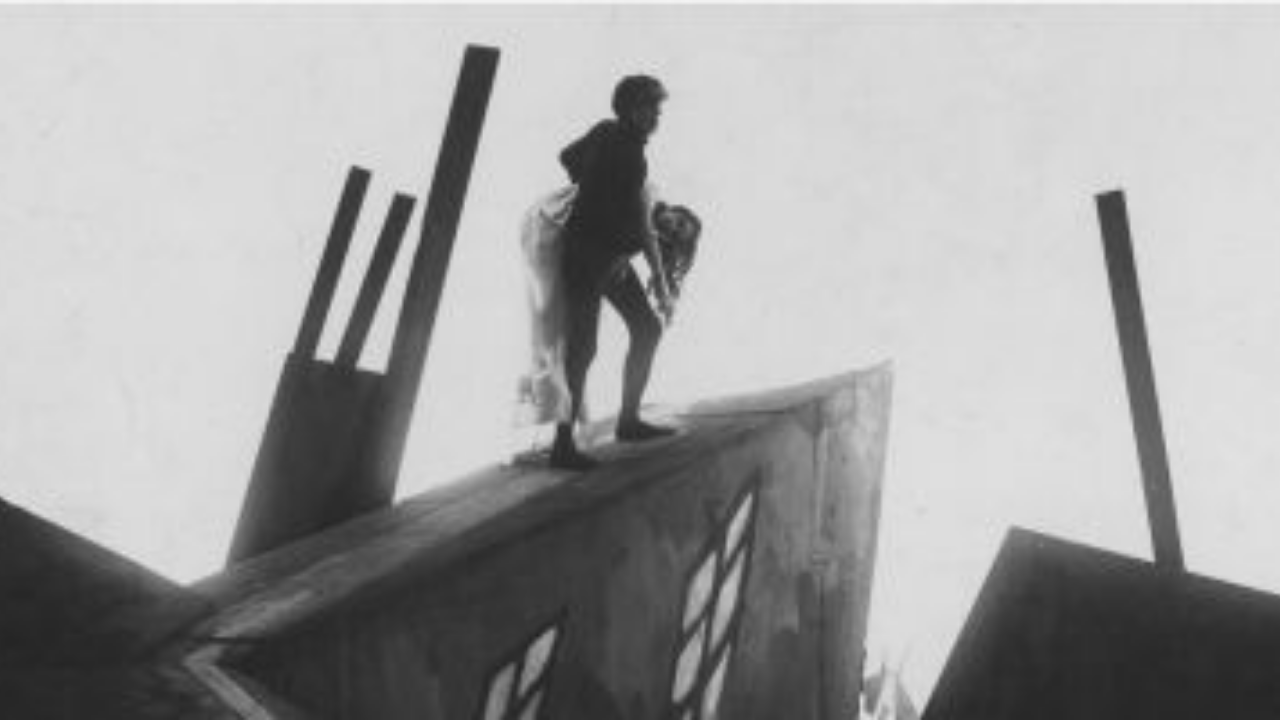
11. The Cabinet Of Dr. Caligari (1920)
When it comes to mind-boggling cinematic experiences, it’s somewhat strange that one of the most impressive efforts is more than a century old and contains no spoken dialogue. First assembled from the compacted and pulverized nightmares of the paranoid (assumedly), German director Robert Wiene’s 1920 classic The Cabinet of Dr. Caligari astounds in every way, boasting a progressively frightening narrative of the titular hypnotist using another man to commit murders, while also utilizing one of film’s earliest and greatest twist endings (and don’t dare blame this movie for inferior filmmakers’ copycatting.)
What makes Dr. Caligari so singularly enduring is without a doubt the endlessly striking and distinct set design, which offered few elements of grounded consistency in frames filled with distorted angles, jagged edges and odd shapes. It’s a rainbow of madness for the eyes, despite being in black-and-white, and its relatively short runtime is just another reason to rewatch and find details you may have previously missed.
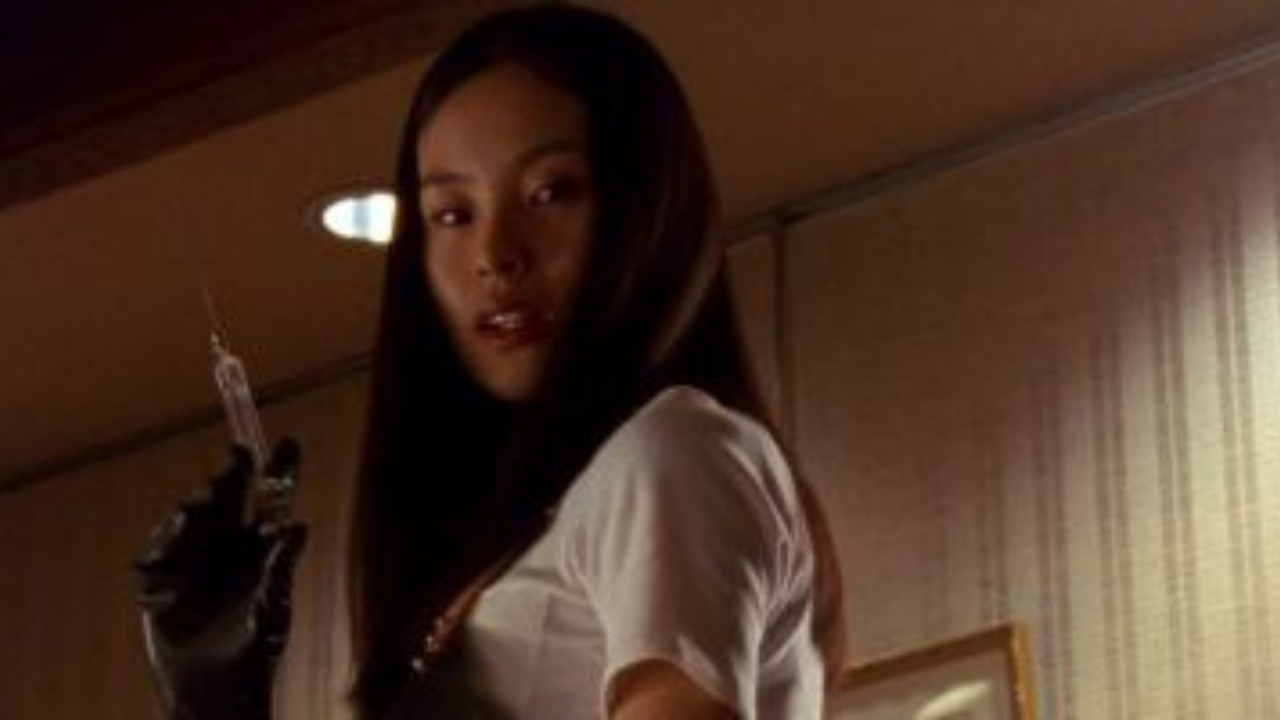
10. Audition (1999)
«Kiri kiri kiri!» A modern masterpiece like no other, Audition is the apex of prolific Japanese director Takashi Miike’s career – though everyone should also check out his batshit crazy One Missed Call, among others. A slow burning thriller that gets more manic and strange on its way to an unforgettable climax, Audition at first appears to be about a widower (Ryo Ishibashi) using a rather chauvinistic method of finding a new girlfriend and his attempt to win over the deceptively quiet «winner,» Asami (Eihi Shiina). But as the story moves forward, you realize that this movie absolutely belongs to Asami and the disfigured puzzle pieces making up her twisted life.
Like many, this film is one that is best viewed knowing as little as possible, but with the understanding of how jarringly quick things turn from crazy to agonizing. More effective and lasting than the J-Horror hits that soon followed, Audition takes Ryu Murakami’s novel to great heights and earns every second of audience turmoil.
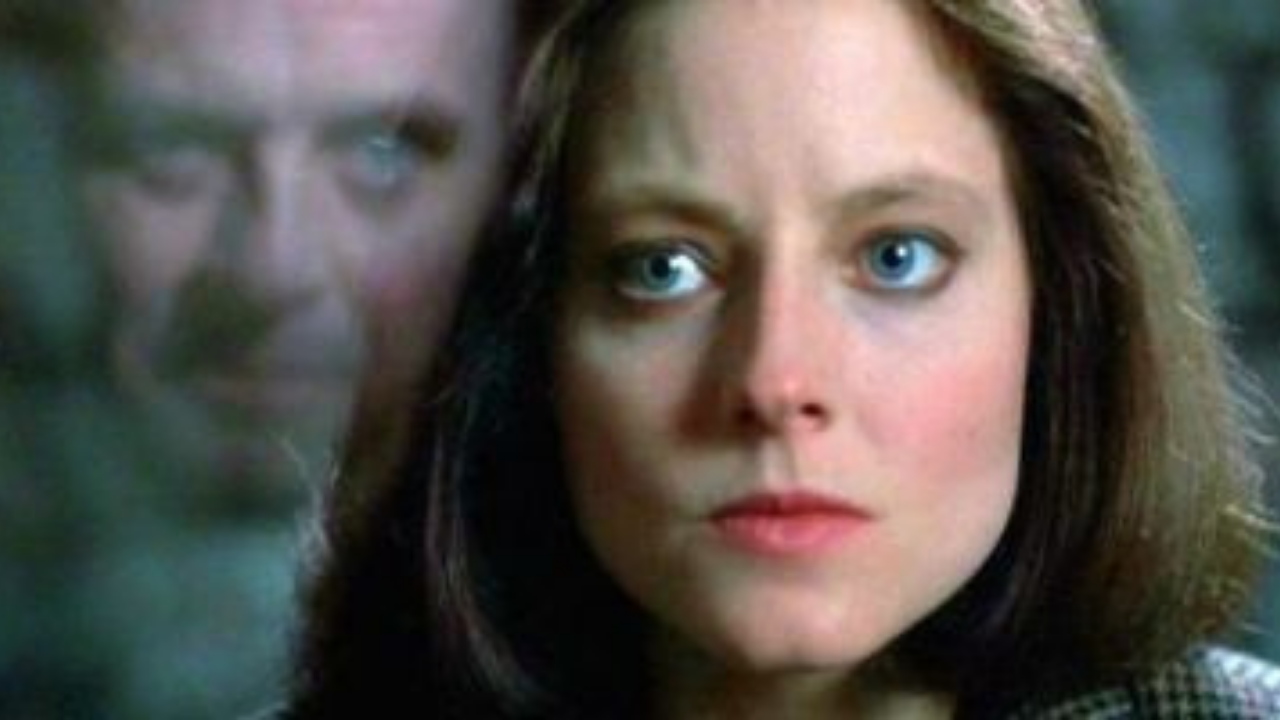
9. The Silence Of The Lambs (1991)
Some people fall on the side of the argument that Jonathan Demme’s 1991 smash The Silence of the Lambs isn’t a horror movie, and those people should spend some time trapped inside of Buffalo Bill’s house before reaffirming their thoughts. That character’s actions feel unbridled and maniacal, but he predictably exhibits bad movie villain behavior in the end, while Anthony Hopkins’ legendary cannibal Hannibal Lecter gives off a calm and affable vibe that can instantaneously give way to the most sadistic and malicious atrocities that humans can do to one another.
Hopkins’ well-balanced wave of antagonism worked perfectly against Jodie Foster’s career-high performance as Clarice Starling, and the film’s cat and monster-mouse game doesn’t let up until its harrowing climax in the dark. Saying nothing of the rest of the Hannibal Lecter films, Silence of the Lambs is an absolutely perfect mix of horrors both psychological and visceral, and it remains the only film in the genre to take home the Best Picture Oscar.
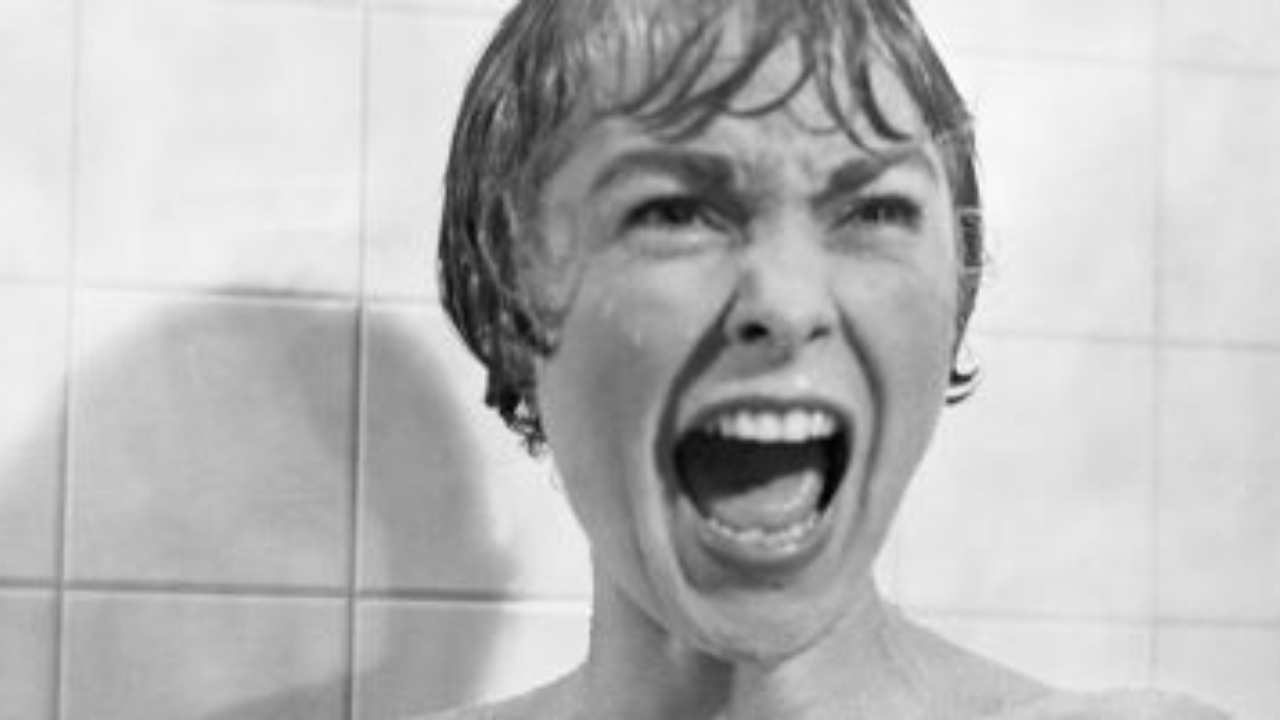
8. Psycho (1960)
You don’t get a nickname like «The Master of Suspense» for just any old reason. Alfred Hitchcock earned that moniker many times over the course of his career, but nowhere was he as pitch perfect and on point as with 1960’s Psycho. At this point the saga of Norman Bates has been endlessly spoofed, parodied, emulated, prequeled, and even remade shot for shot, but none of that takes away or diminishes the eerie power of Psycho. When Marion Crane (Janet Leigh) steals thousands of dollars from her boss and hits the road, she winds up at the worst possible motel.
Using this noir-ish set up, Hitchcock slyly subverts expectations and meticulously crafts a deeply psychoanalytical thriller that deconstructs fear, desire, sexuality, and the human psyche. Beyond all of these themes and the subtext, Psycho is also creepy, taut, and horrifying with the shower scene still standing out as one of the most terrifying moments in all of movie history.
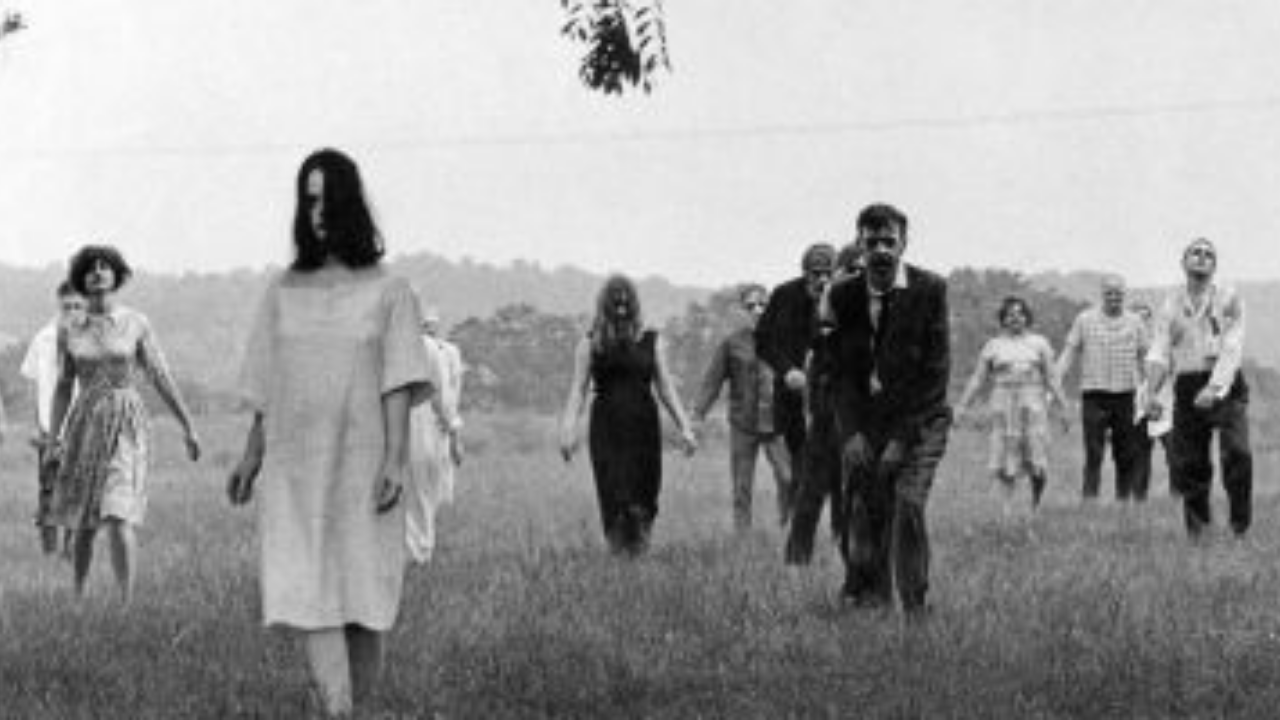
7. Night Of The Living Dead (1968)
When you think of zombies, it probably calls to mind a wave of undead corpses in varying stages of decomposition shuffling at you like an inevitable wave, and if one happens to bite you — game over: you become of these brain-hungry bastards. This is largely thanks to George Romero’s 1968 Night of the Living Dead, which changed the game as far as zombie movies go (before his interpretation of Richard Matheson’s novel I Am Legend they were primarily voodoo-related creatures). Not only did Night permanently alter the landscape and create the modern zombie, this independent production is a terrifying horror tale with a sharp critique of everything from racial politics in America to Cold War paranoia to the Vietnam war. Not too shabby for a film about flesh-starved cannibals.
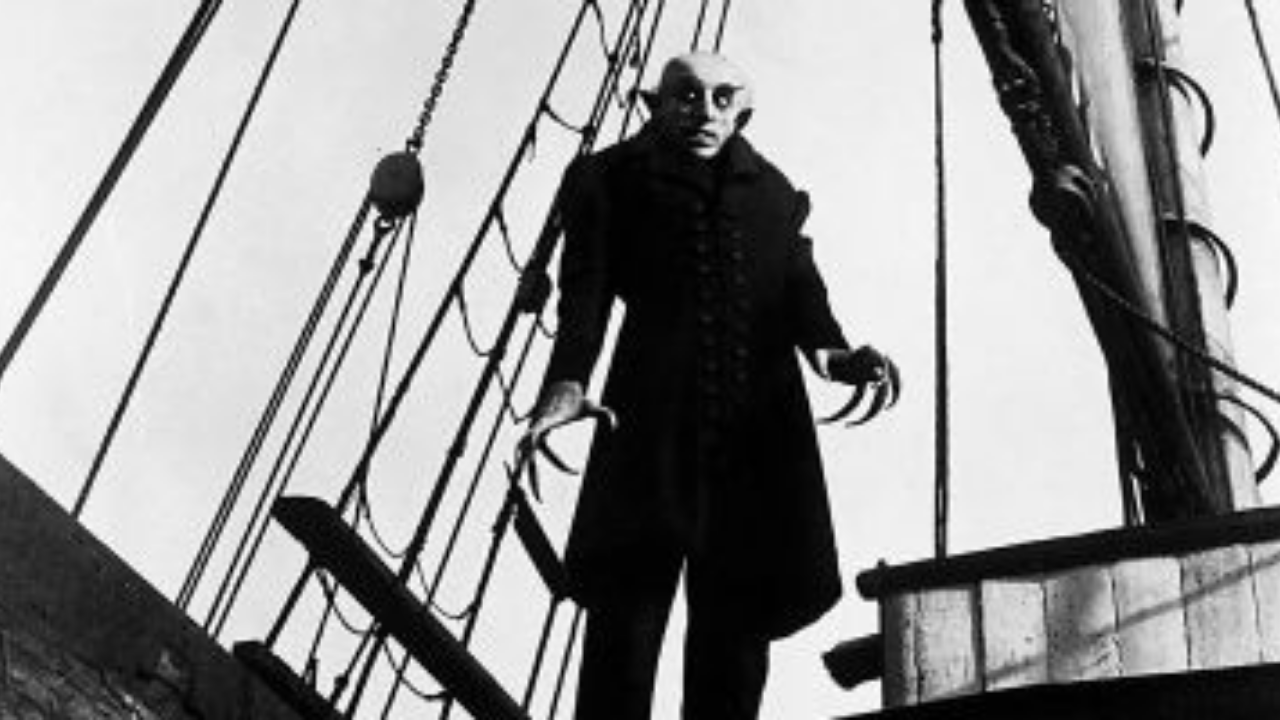
6. Nosferatu (1922)
Dracula has a long, storied history on the silver screen which started with F.W. Murnau’s classic silent film Nosferatu, which is still, more than 90 years later, one of the spookiest, scariest movies of all time, and perhaps the greatest rendering of the world’s most famous vampire. With names and details changed because the studio couldn’t secure the rights to Bram Stoker’s novel, Nosferatu follows the mysterious Count Orlock, his real estate agent, and the real estate agent’s wife.
This is Dracula before he became a mainstay of popular culture, free from the baggage of decades worth of appearances. Max Schreck, who plays Orlock and has his own shadowy mythology, is one of the eeriest screen presences of all time, sending shivers up your spine. One of the defining entries of early 20th Century German Expressionism, Murnau’s stark contrasts, artistic flourishes, and symbolic imagery continue to be influential to this very day.
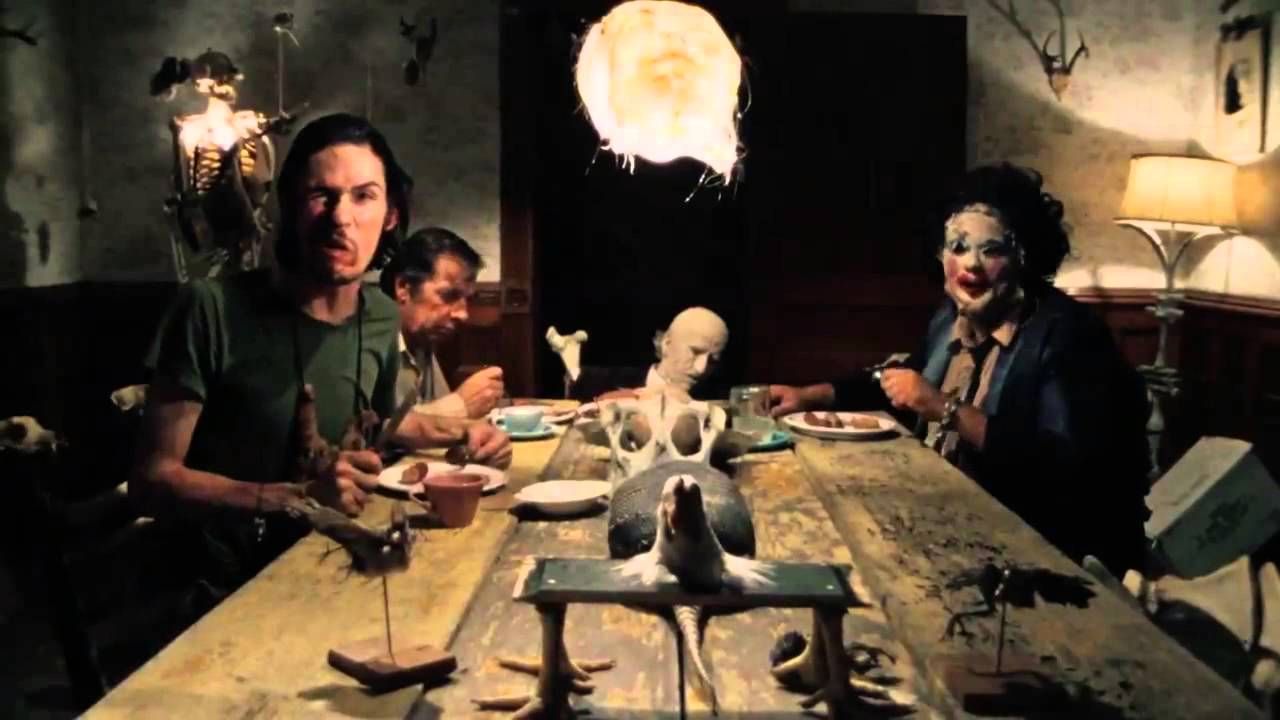
5. The Texas Chainsaw Massacre (1974)
How can you not love a chainsaw wielding Texas madman wearing a mask made out of human skin who also happens to be part of the most dysfunctionally psychotic cannibal family you’ve ever seen? I guess if you happen to be one of the teens who happened upon Leatherface and his clan in Tobe Hooper’s 1974 The Texas Chainsaw Massacre and its ever-increasing list of sequels and prequels, you might not be a fan, but as for the rest of us who adore horror, we have relatively few complaints.
Dismissed upon its release as «despicable,» Texas Chainsaw went on to become a cult favorite for gore hounds that evolved into a legitimate horror classic. Brutal and bloody, shocking, and deeply unsettling and transgressive on so, so many levels, the film uses the exploitation trappings to explore themes of violence, capitalism, gender politics, and more, making it one of the greatest slasher films ever put on celluloid.
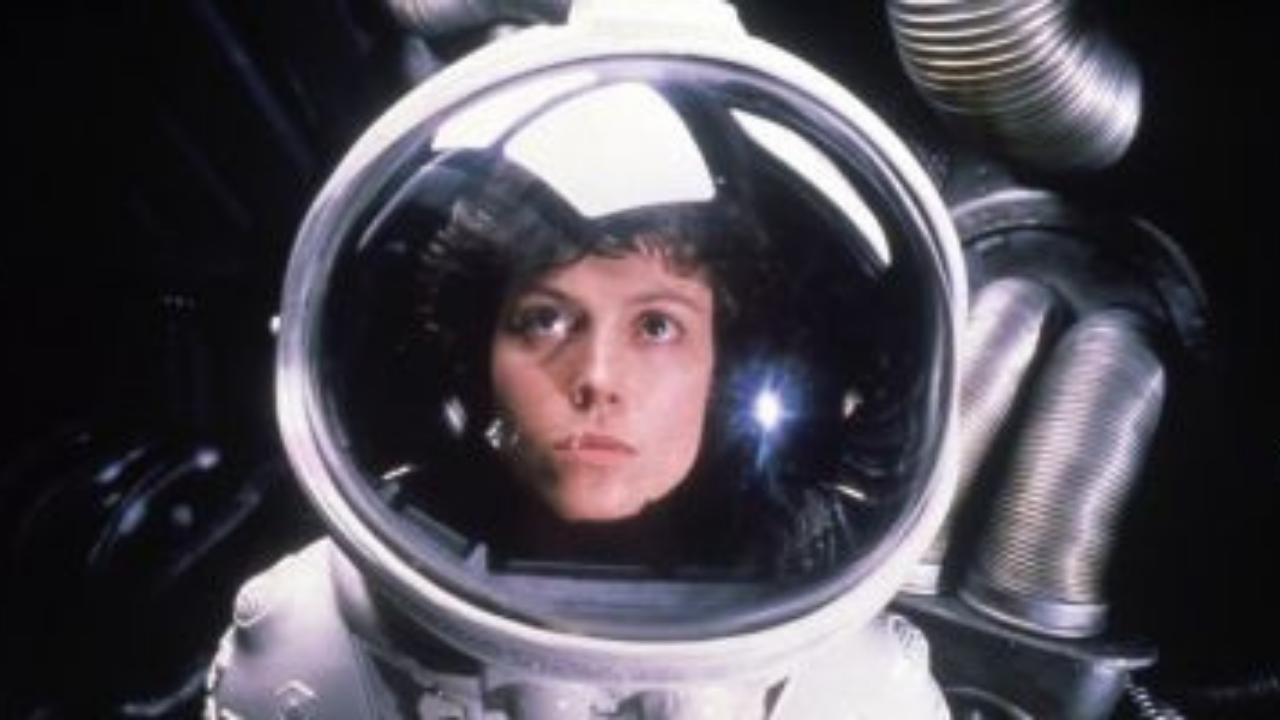
4. Alien (1979)
It’s easy enough to scare the crap out of people with an eight-foot-tall, armor-plated alien killing machine with razor-sharp teeth, an extra mouth, and acid for blood, but Ridley Scott’s 1979 thriller Alien brings so much more than incredible creature design to the table. There’s been an endless debate about whether this is truly sci-fi or horror, but any way you look at it, the first of the Alien movies is straight up terrifying. Scott manages to squeeze every last bit of claustrophobia and terror out of relatively few moving parts, building the surprise and suspense throughout and capped off with one of the best protagonists of all time: Sigourney Weaver’s Ellen Ripley, who is tough and badass, but also fragile and relatable as a woman driven to extremes by an extreme situation.
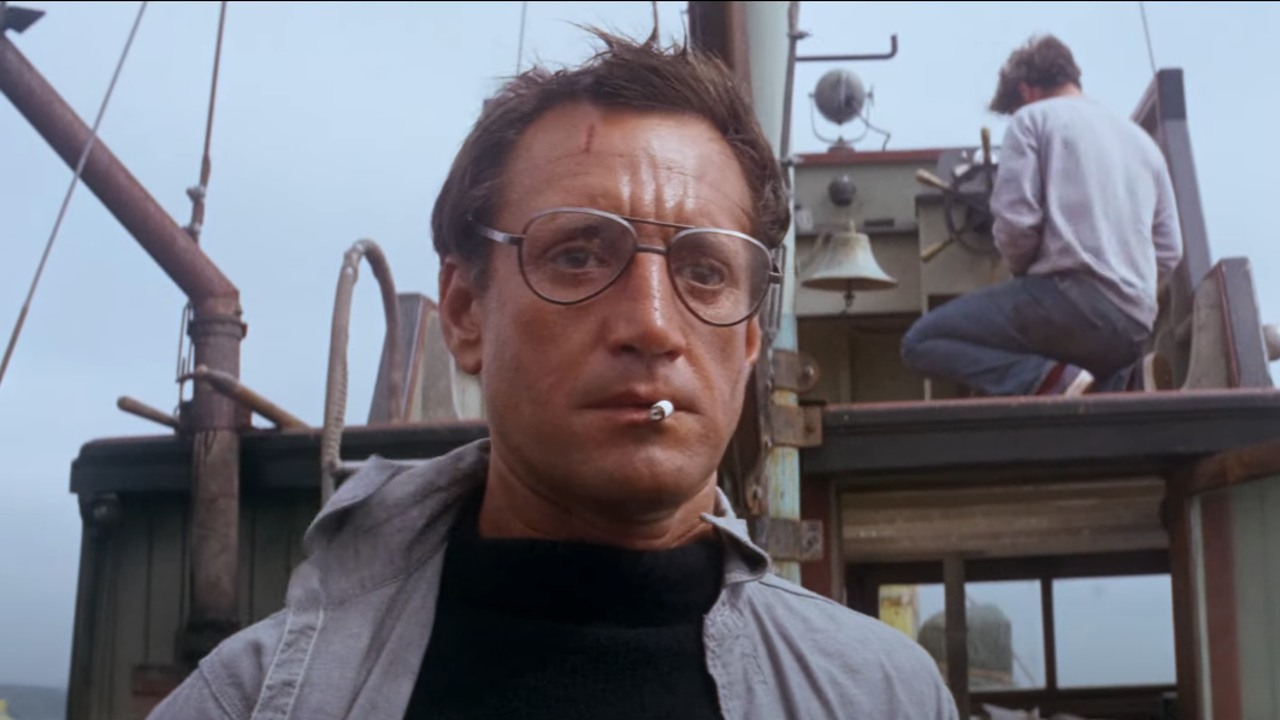
3. Jaws (1975)
When a movie convinces an entire generation to stay out of the ocean during the summer and give water sports a seriously sinister, terrifying edge, you know it’s something special. Steven Spielberg’s Jaws not only ushered in the era of the modern blockbuster, but remains, one of the most taut, terrifying movies ever put on film. You don’t even need to see the shark to feel the tension and horror, which is partially strategic and partially due to rampant technical issues with the mechanical creature, but the shot of the monster great white popping out of the water as Roy Scheider’s Sheriff Brody chums behind the Orca is one of the most enduring images, not just in horror, but in cinema history. It was perhaps so effective, that many believe it negatively impacted the livelihood of sharks.
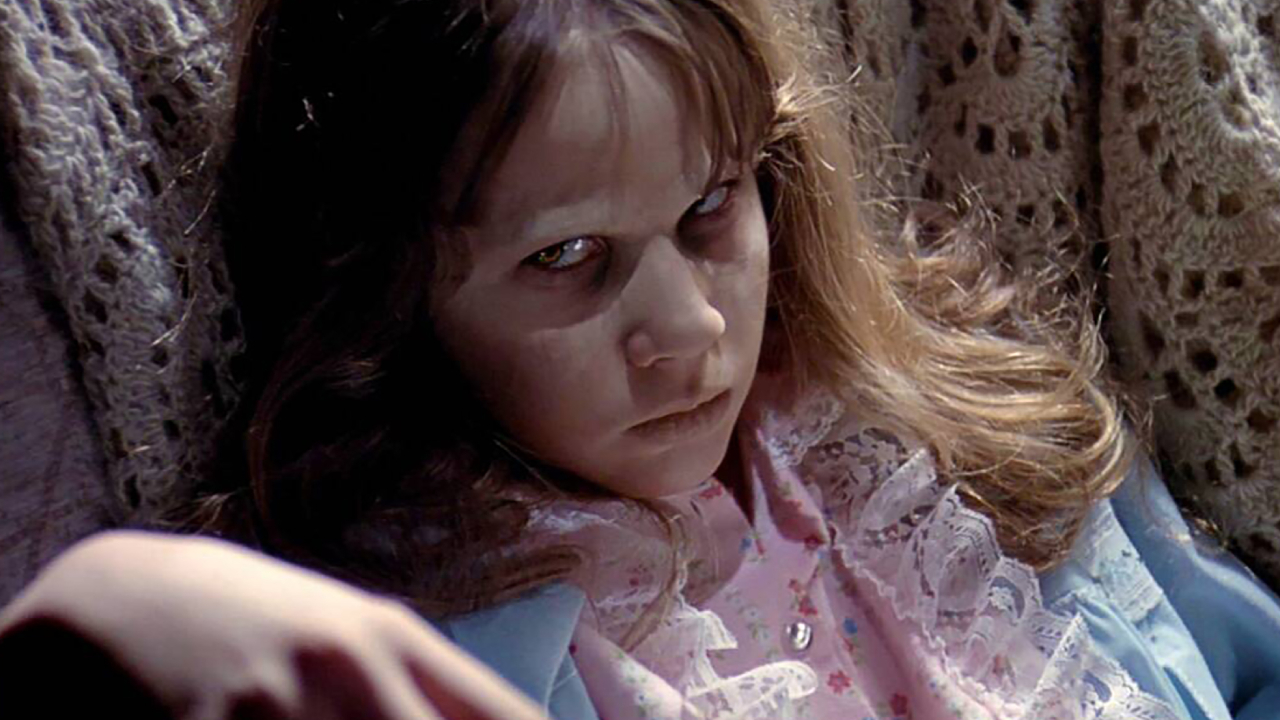
2. The Exorcist (1973)
In William Friedken’s The Exorcist, when 12-year-old Regan MacNeil (Linda Blair’s career defining performance) begins to exhibit strange, terrifying behavior, her actress mother (Ellen Burstyn) tries everything she can think of. Torn between science and religion, knowledge and superstition, and pushed to her limits, she turns to her last hope: the short-on-faith priest Damien Karras, to cast out the demon that has taken up residence in her formerly sweet little girl.
Supposedly based on a true story, The Exorcist pits old time religion against more modern beliefs, explores the nature of faith, themes of good versus evil, and the intrinsic fears of parenthood. Additionally, it’s full of masterful tension building, blasphemous and profane imagery, deep spirituality, and fantastic performances that only enhance the scares and frights. It’s impossible to hear that haunting, nerve-jangling theme and not shiver with dread.
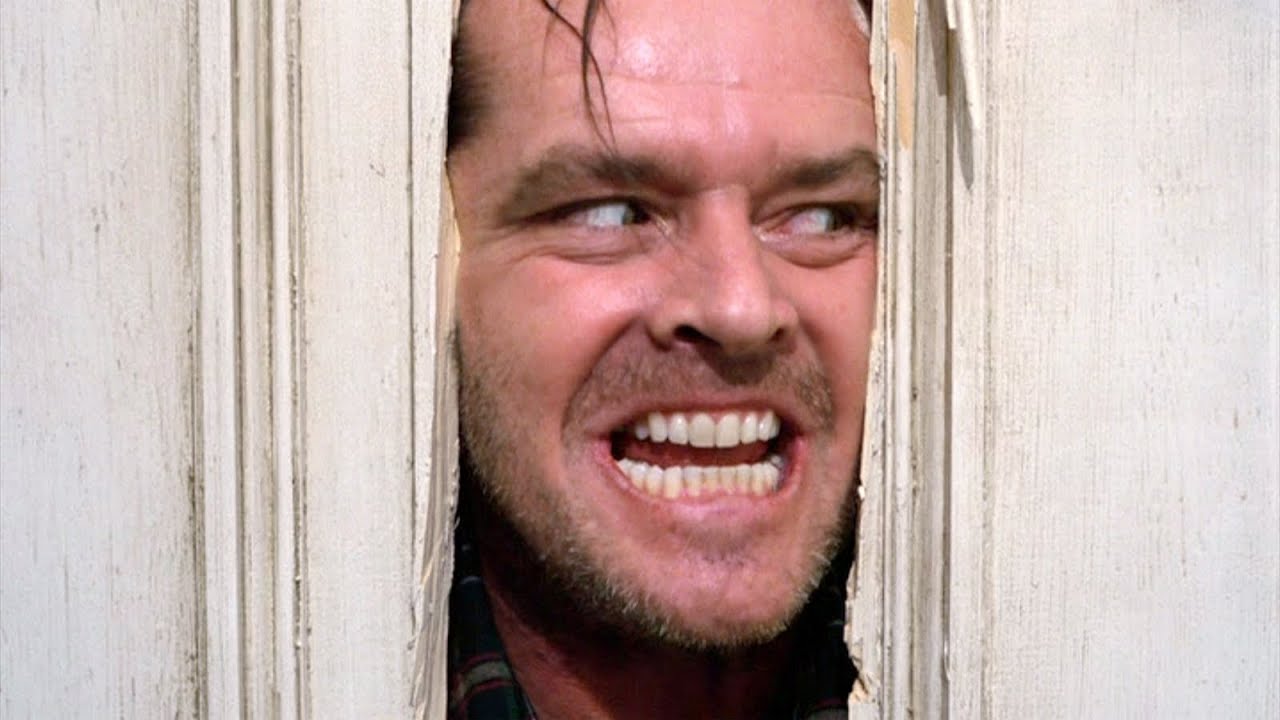
1. The Shining (1980)
For all the spine-chilling tales that horror-meister Stephen King put to the page, so few share a similar impact in live-action, and such an achievement is a small fraction of what suspends Stanley Kubrick’s The Shining high above all other horror films. Upping the supernatural ante of King’s alcoholism-fueled descent into madness, Kubrick meticulously took each maddening piece of this claustrophobic story, which sees a writer and his family caretaking a very special hotel, and jammed it into another until it resembled the iconic Overlook carpet.
From that vision came Jack Nicholson’s maniacally uninhibited Jack Torrance, Shelly DuVall’s tortured Wendy, dream-stealing twins, blood-spewing elevators, never-ending hallways, one royally mind-fucked visit to Room 237, a garden maze, and backwards words that turn mirrors into hazards. To say nothing of Scatman Crothers’ heroism. Bypassing any snap decisions on how to inspire nightmares, Kubrick famously ran his cast and crew through the wringer of muck until perfection happened, and that perfection is The Shining, which ends with a bizarre twist more paralyzing than an ax to the spinal cord.
I wonder how Stephen King himself would feel about our list given that he famously hated Stanley Kubrick’s interpretation of his 1977 novel. Of course, as we all know, it is impossible to please everyone. Yet, is that not one of the most essential aspects of the genre in some ways?
The intent of horror has never really been to “please” anyone, unless you are the kind of moviegoer who finds fright, dread, or disgust to be cathartically satisfying. Not to mention how well it acts as a “universal donor” with almost any other style of storytelling (sometimes seamlessly incorporating an aura of sci-fi, comedy, or even romance), arguably making it the most versatile genre of filmmaking there is. We cannot ignore, however, that such a reputation still comes with a polarizing price and, that being said, what do you consider the greatest scare in cinematic history?
If you’ve already made your way through the above list of movies, there are plenty of great horror movies on Hulu, awesome horror movies on HBO Max and excellent scary movies on Shudder to check out.
Текст выше является машинным переводом. Источник: https://www.cinemablend.com/new/30-Best-Horror-Movies-All-Time-122567.html



